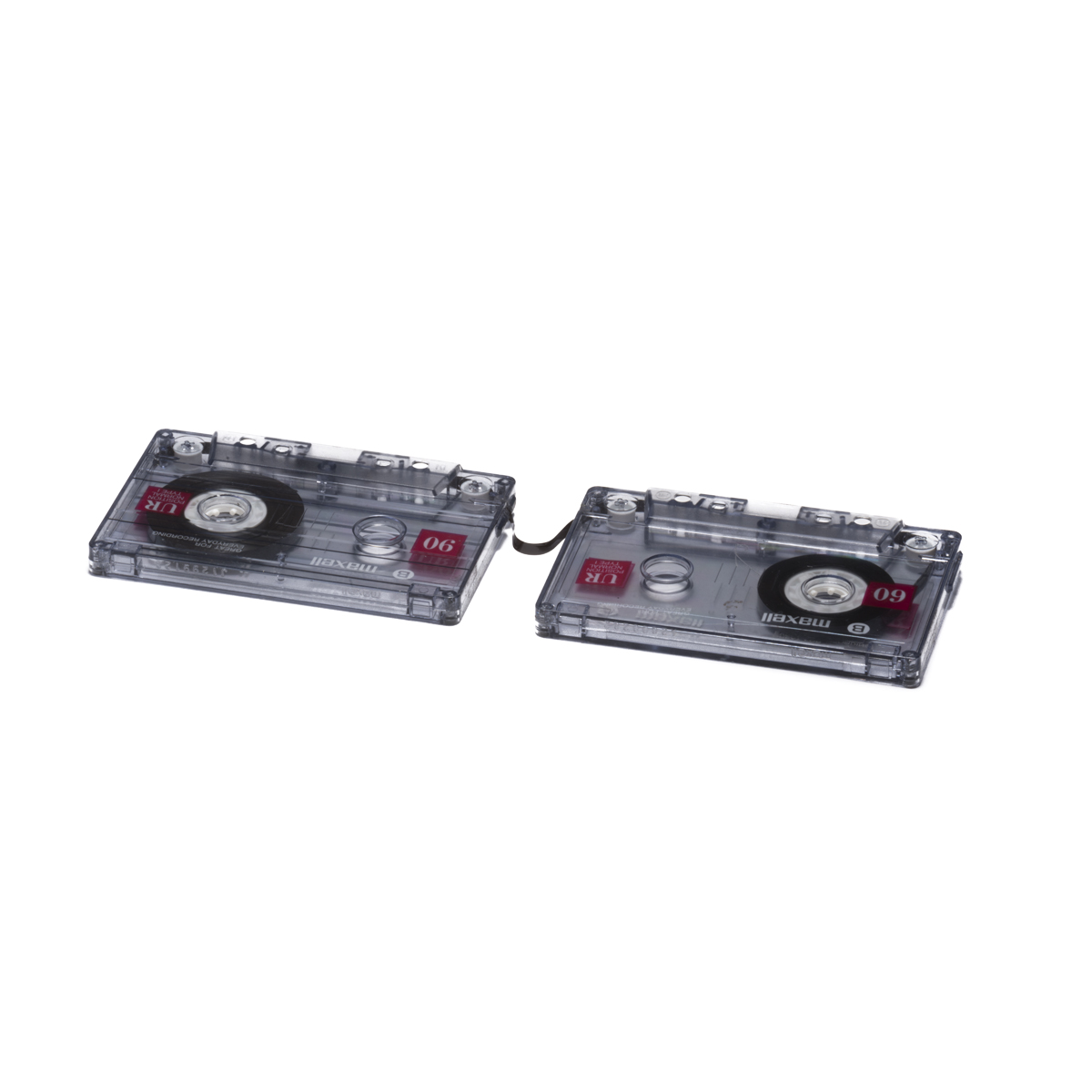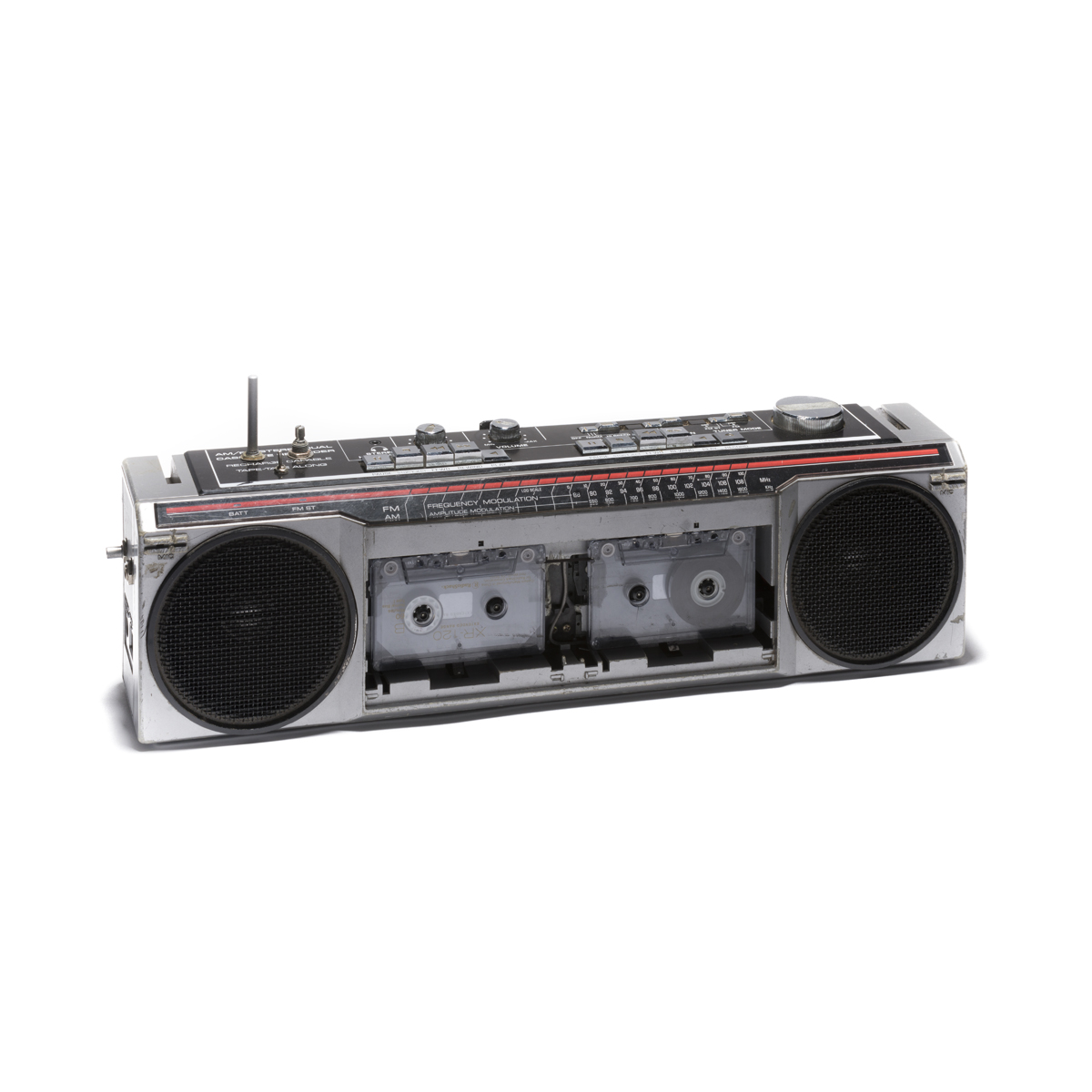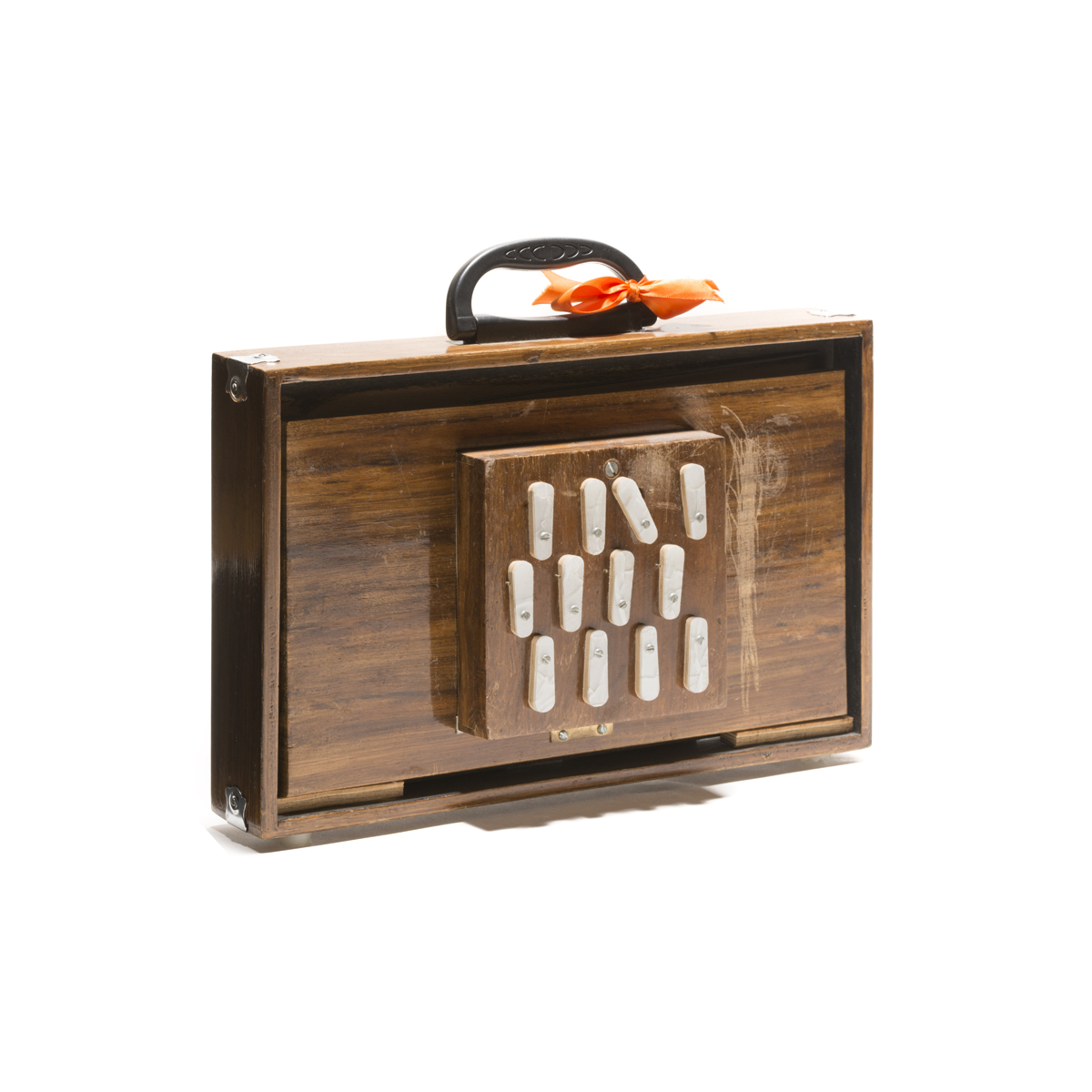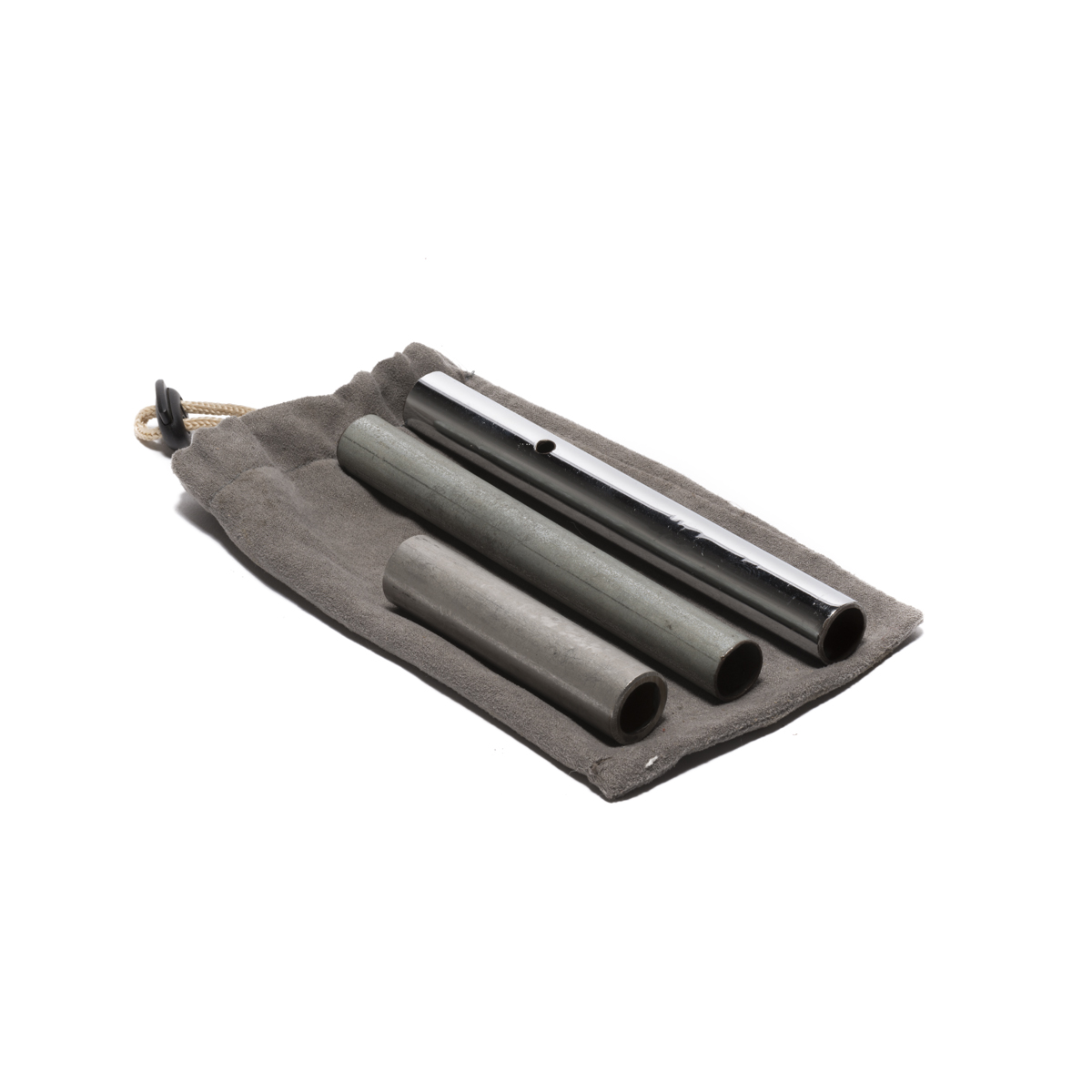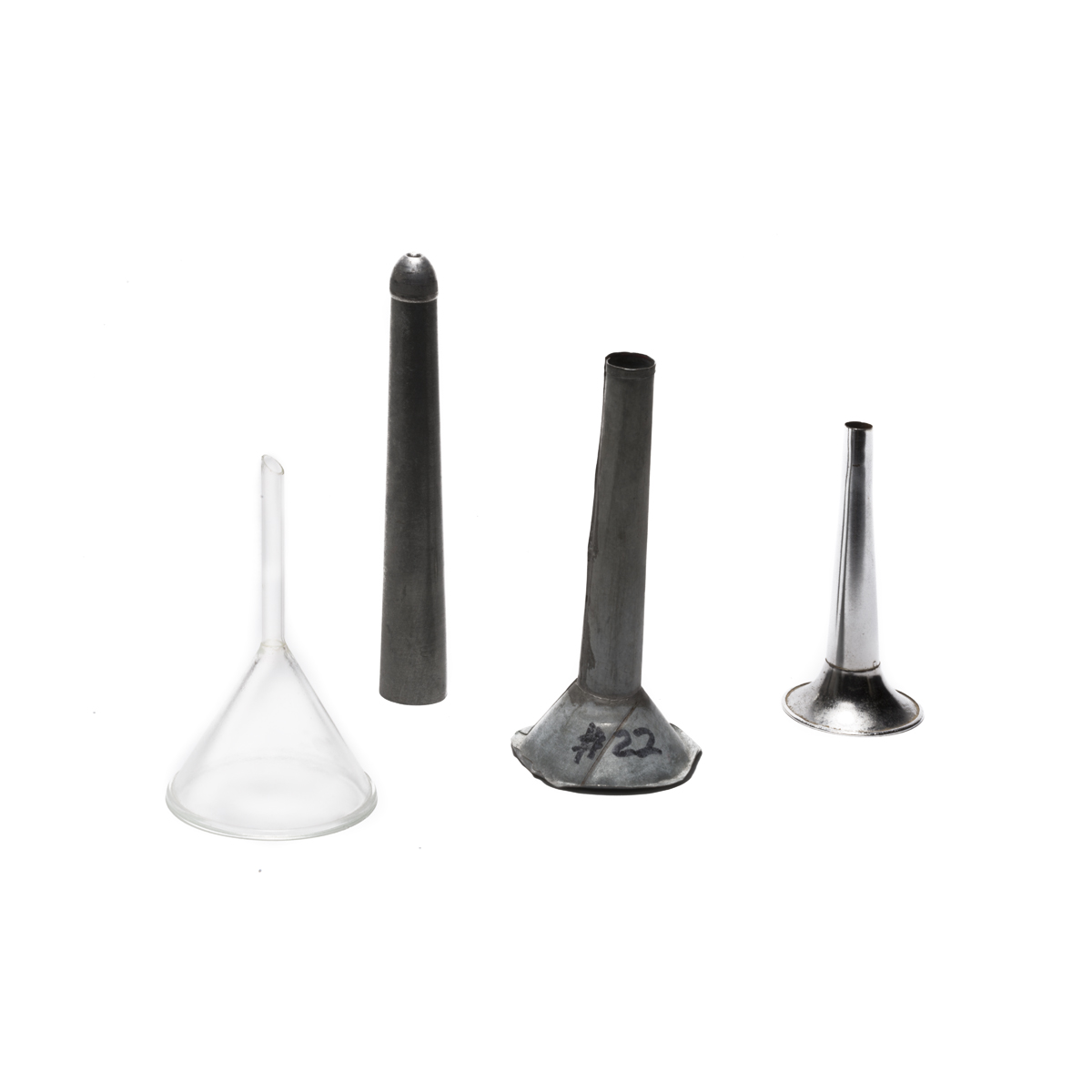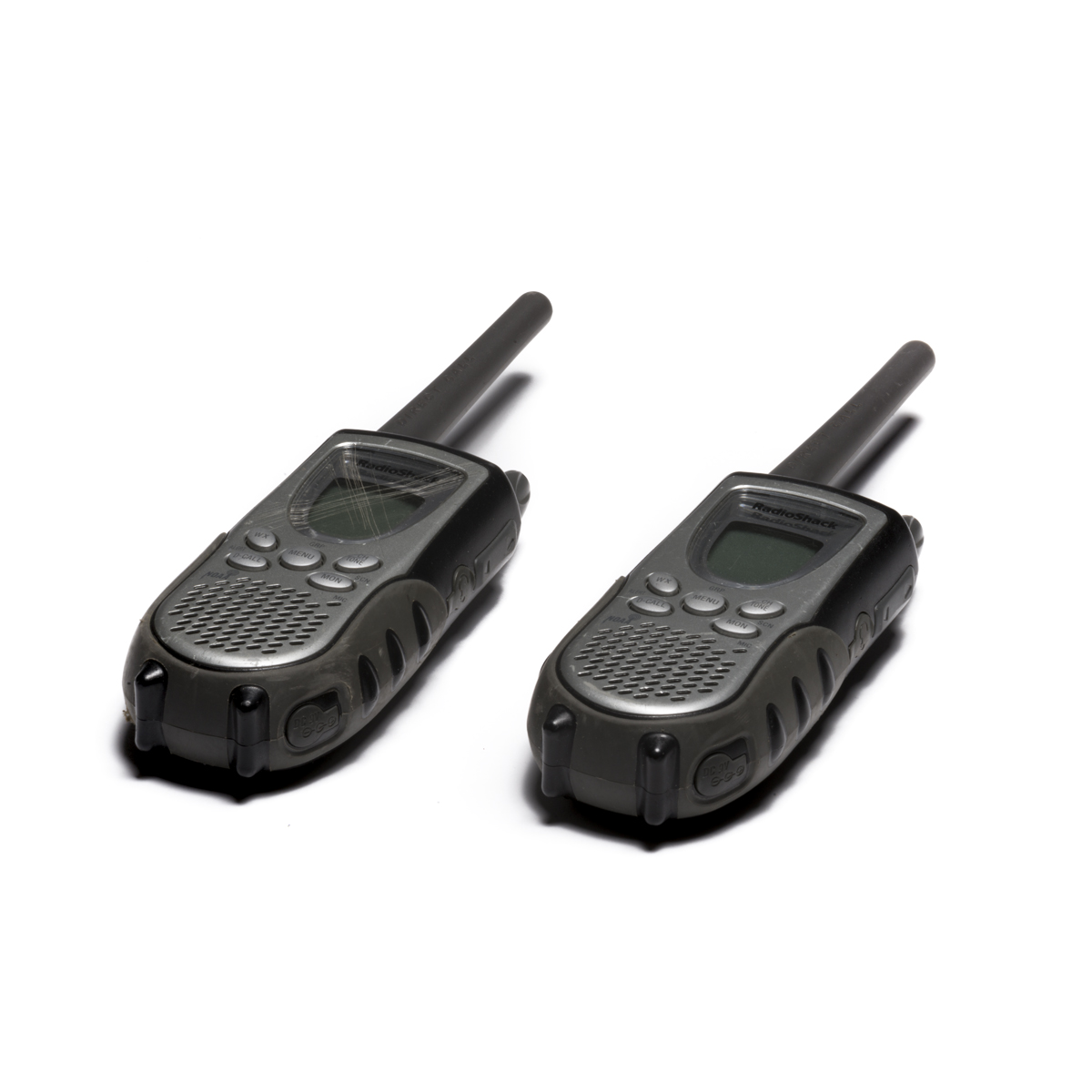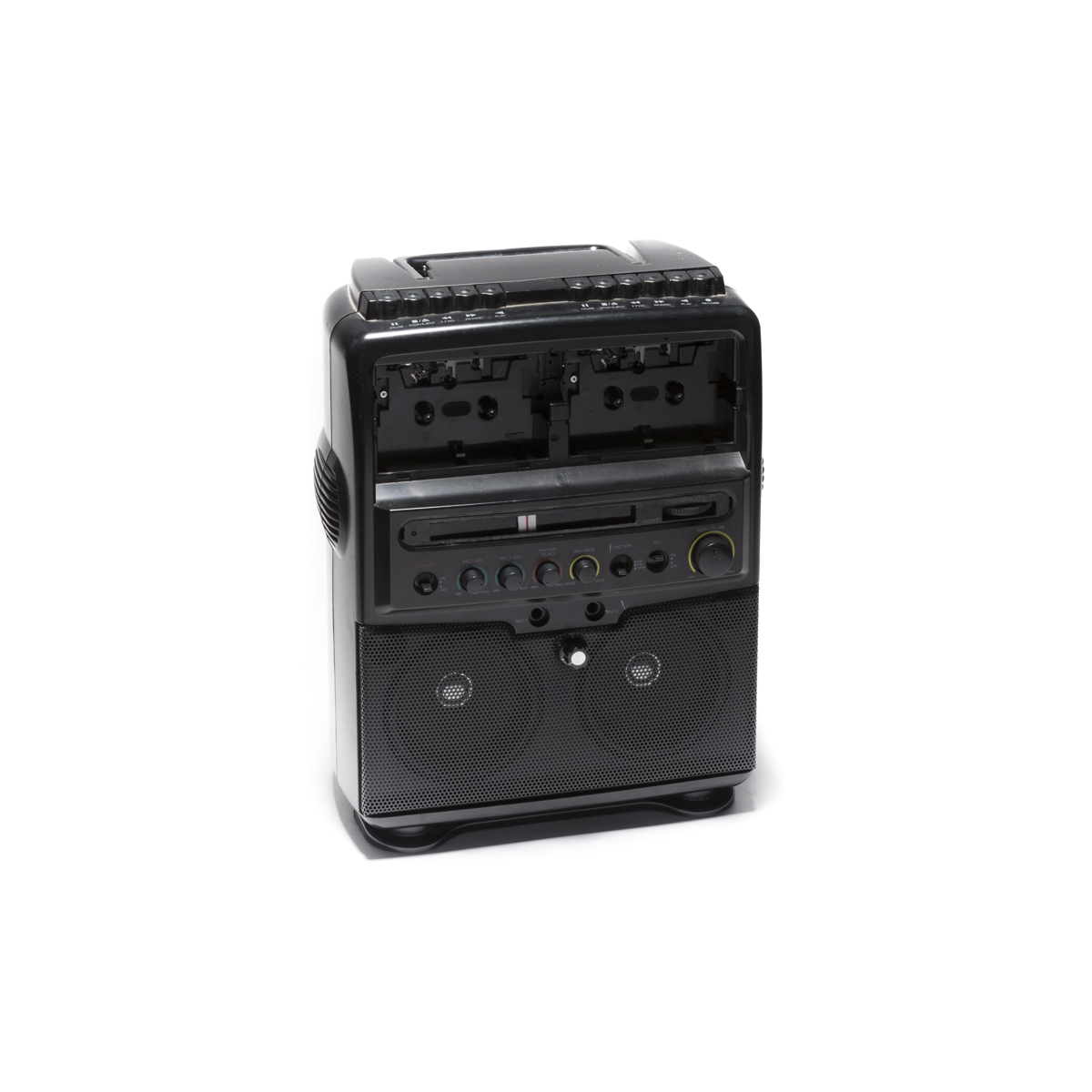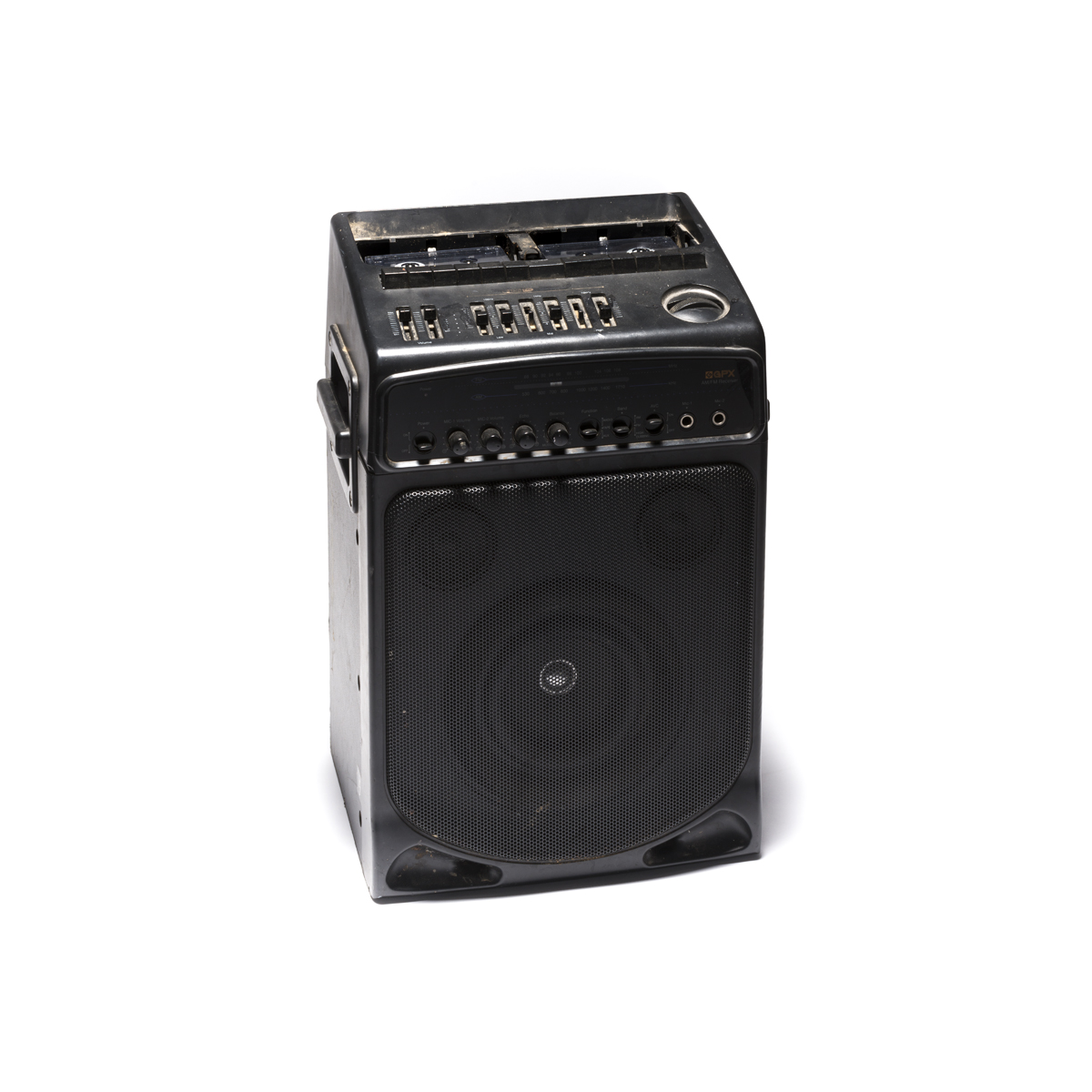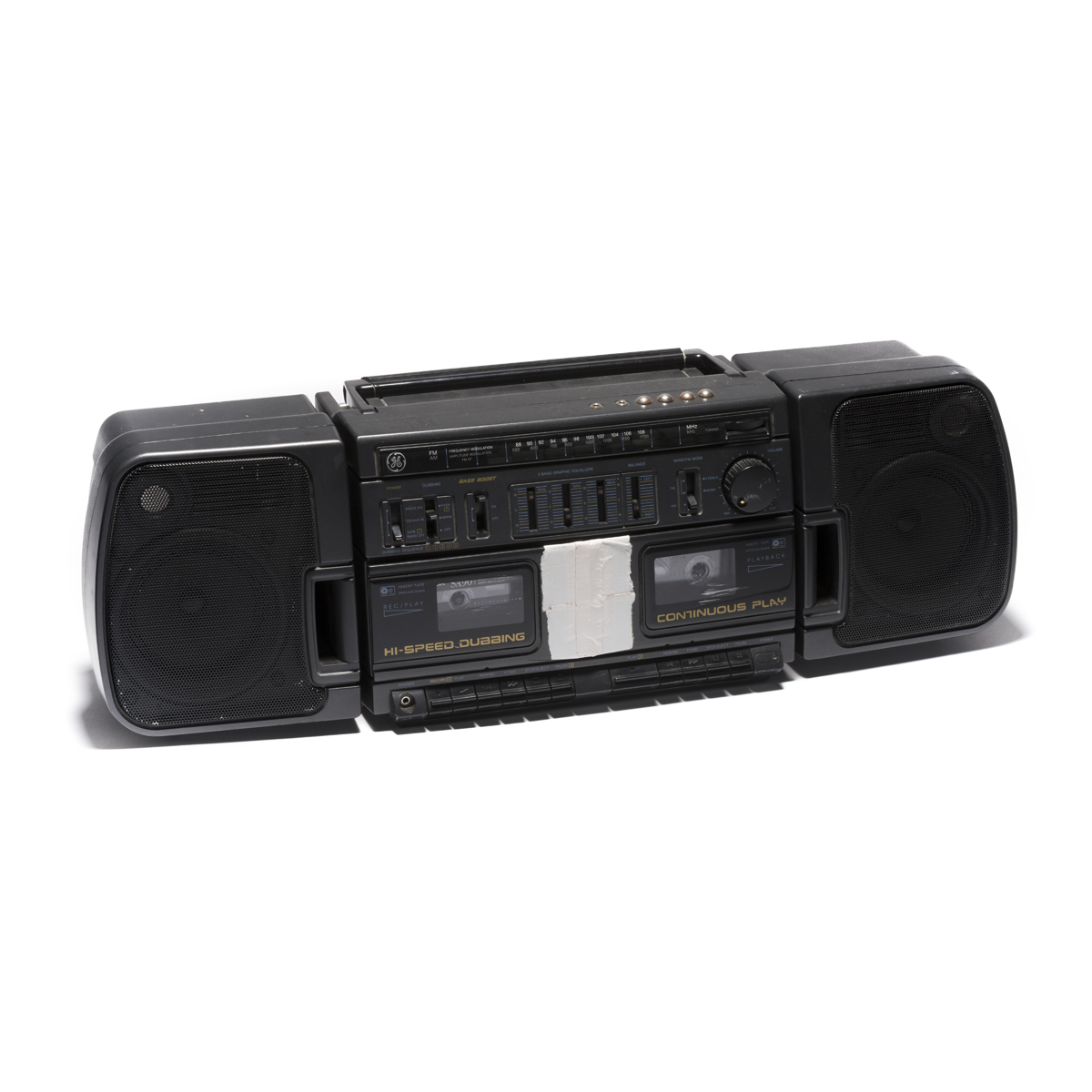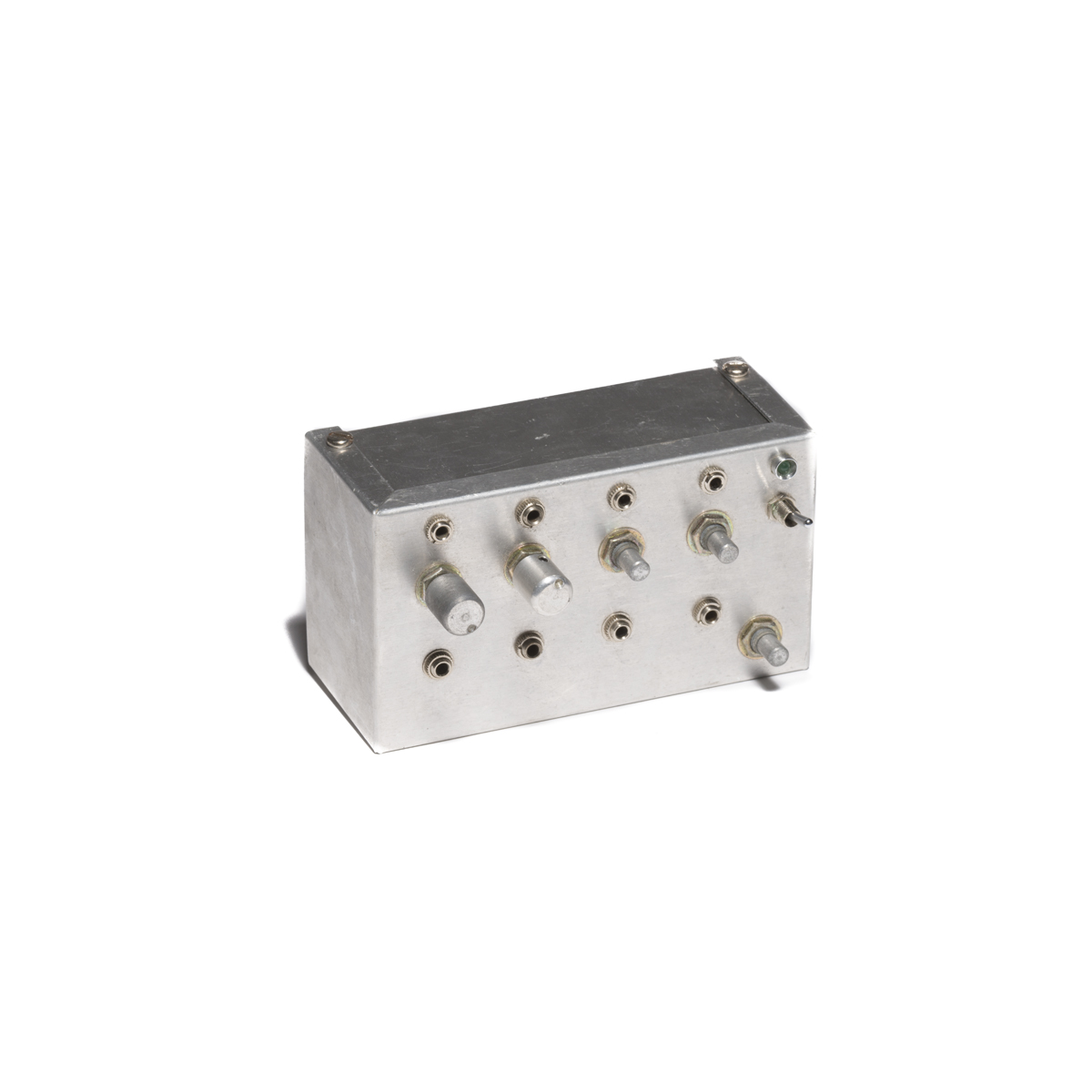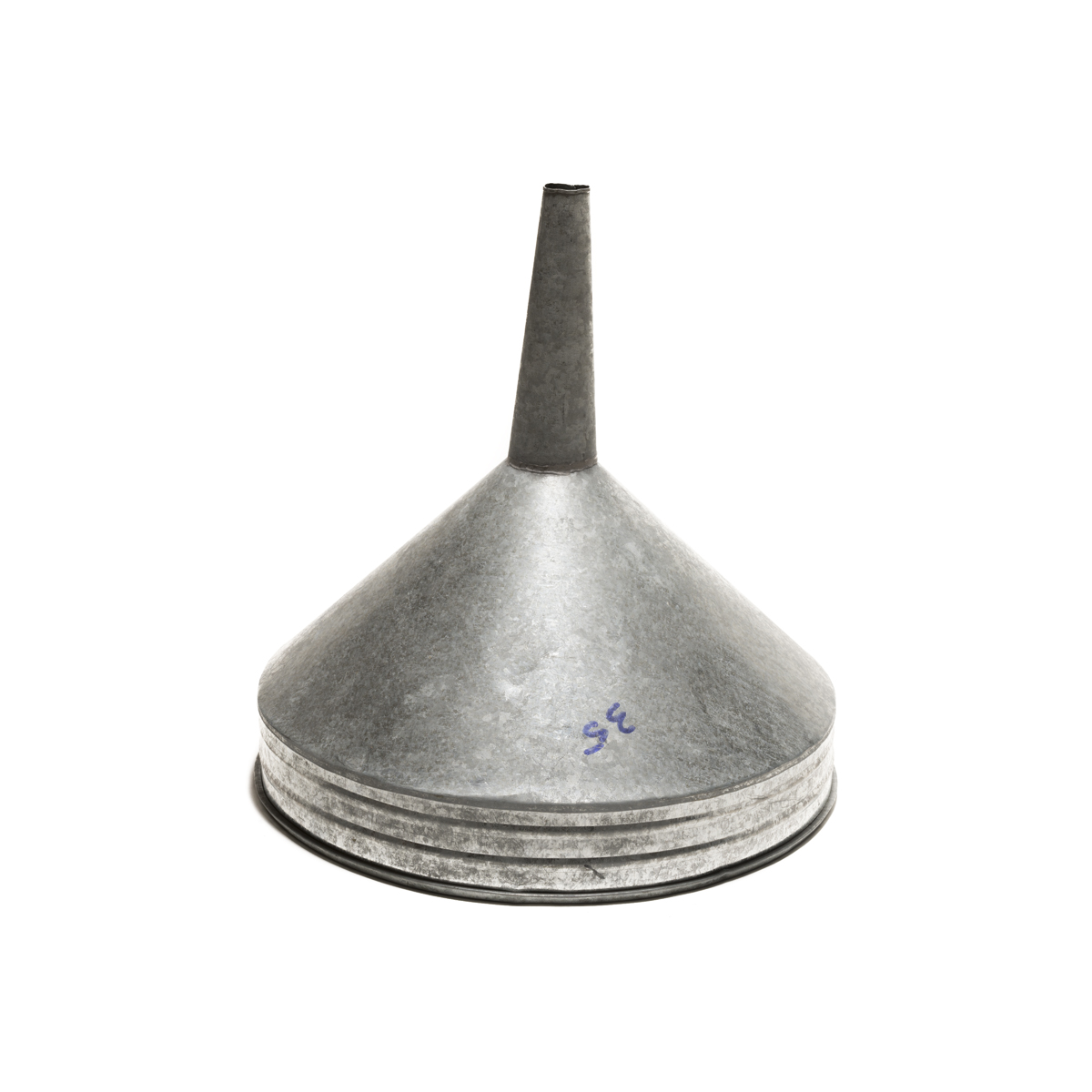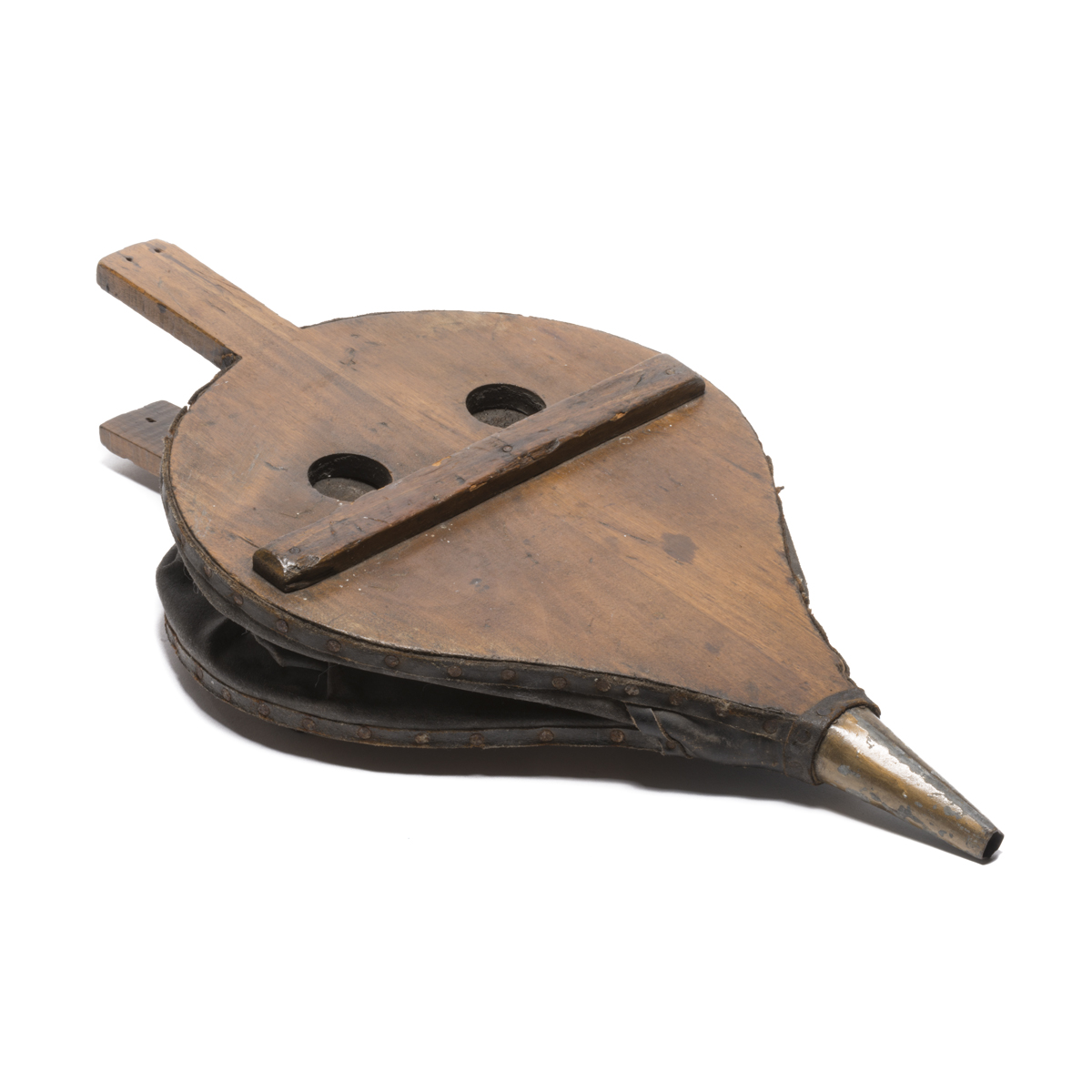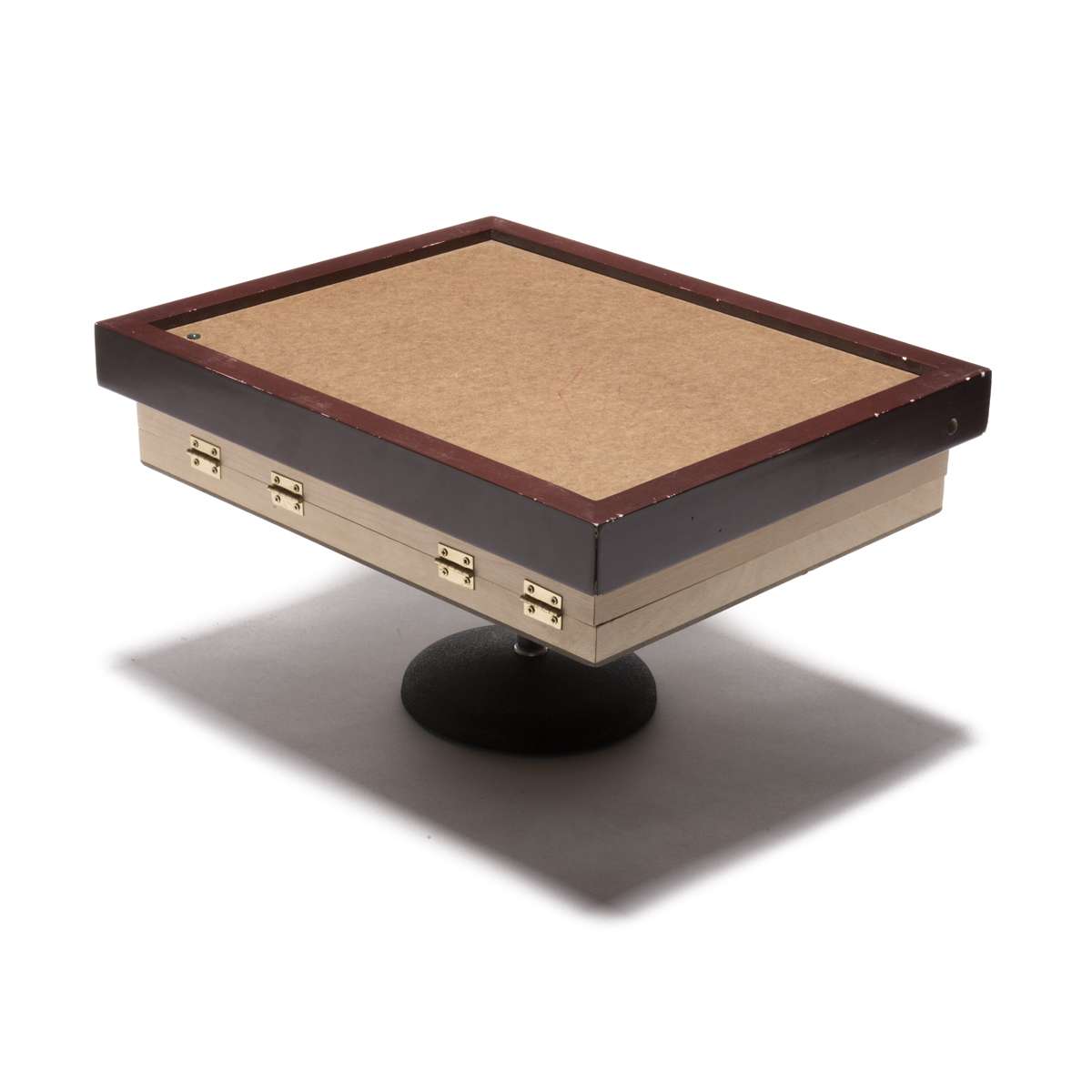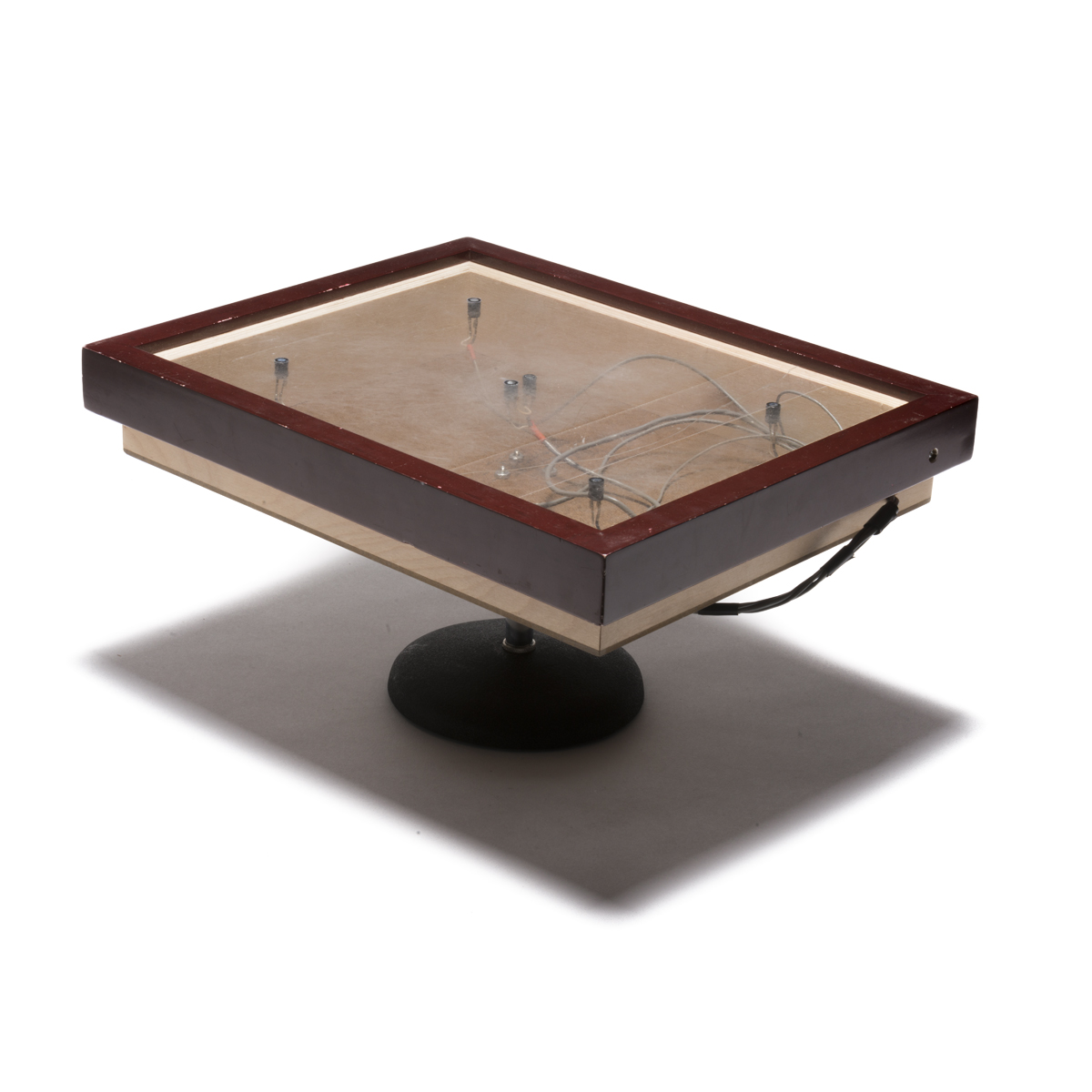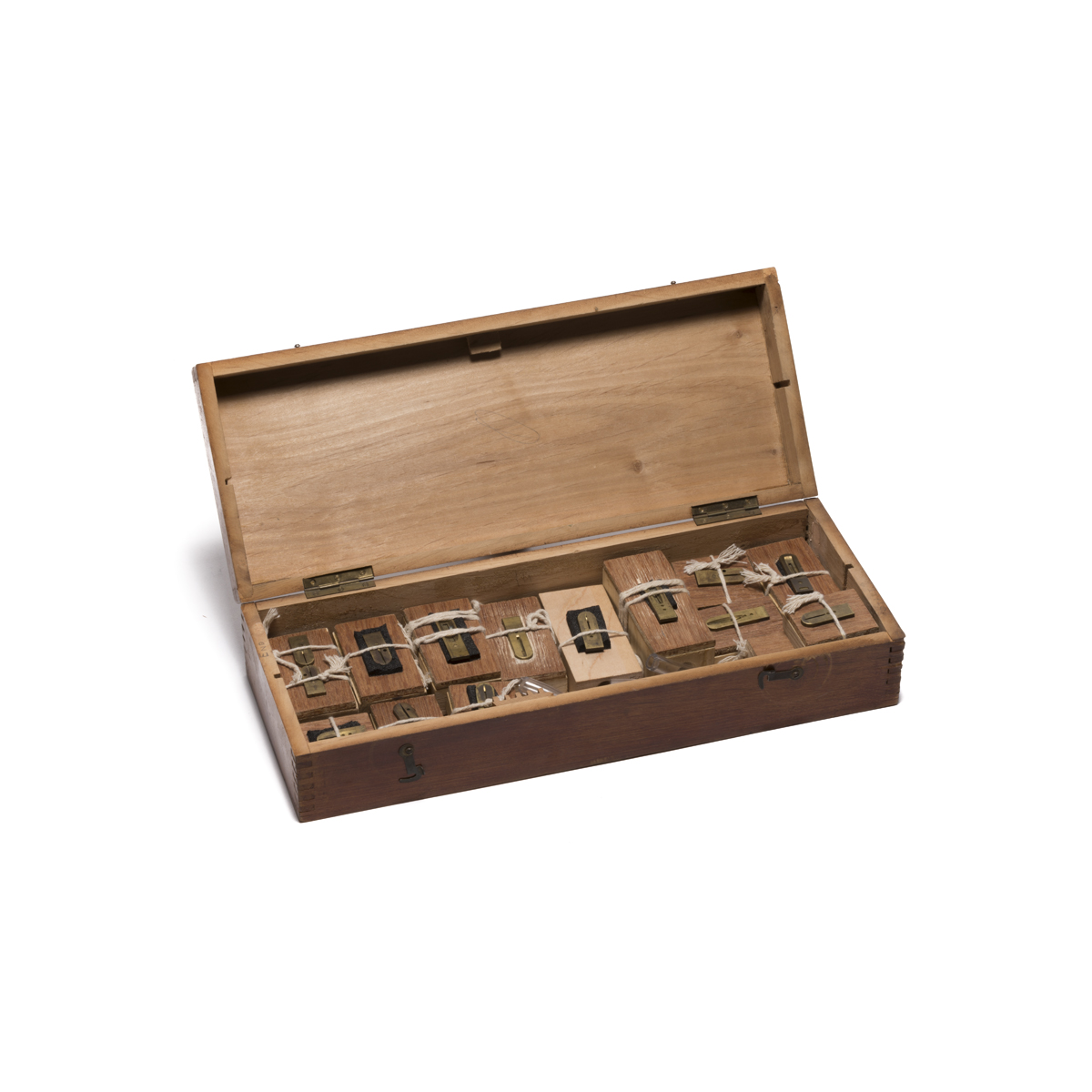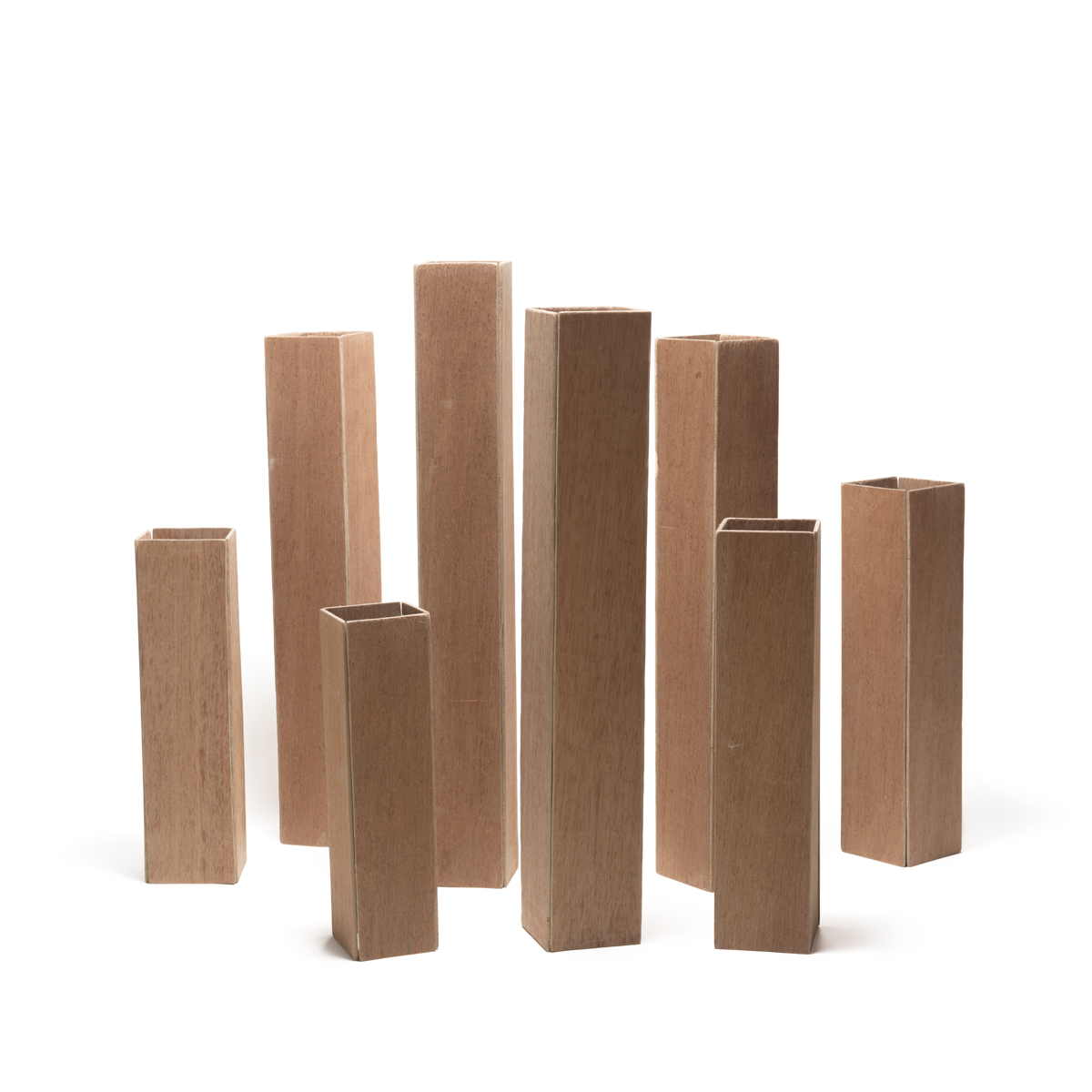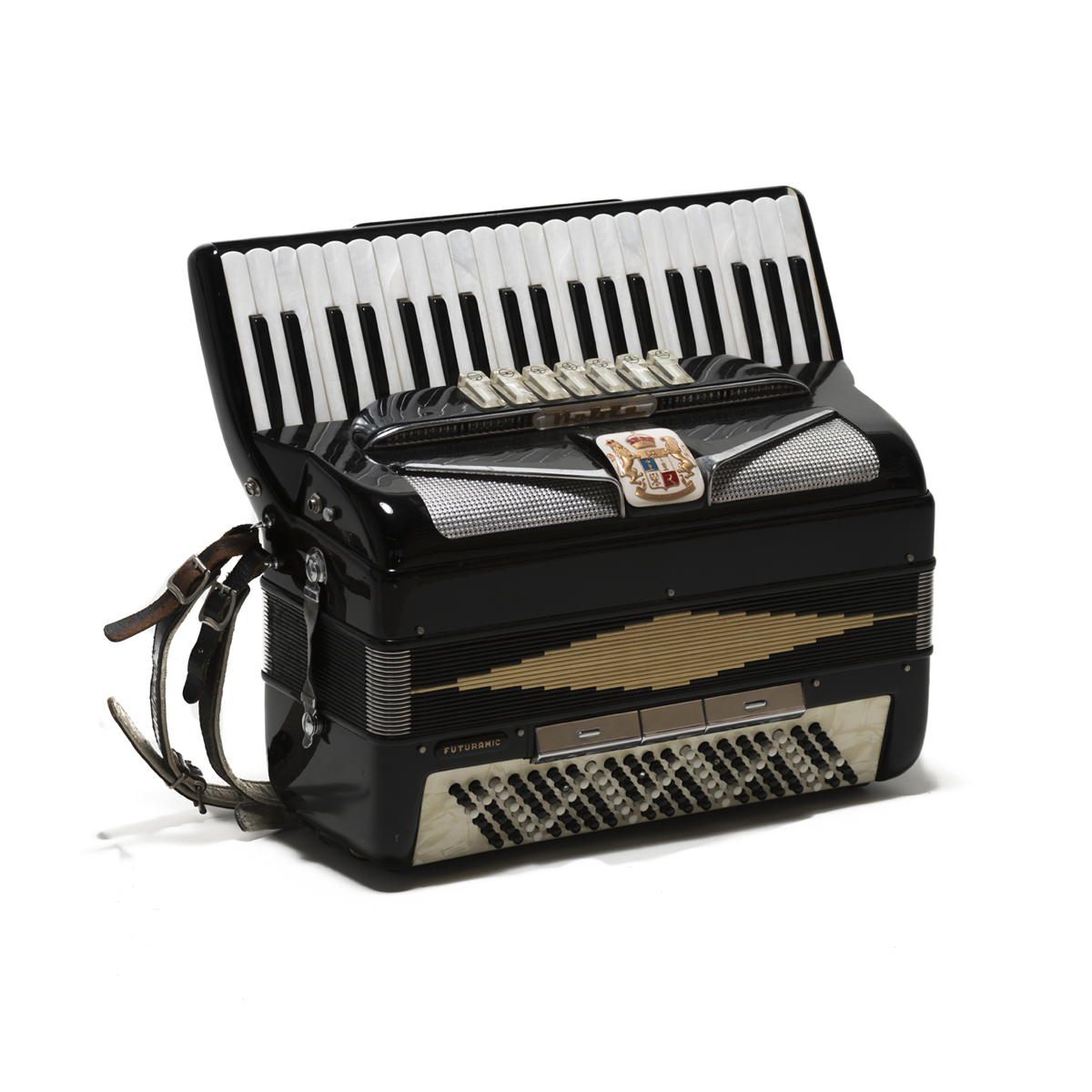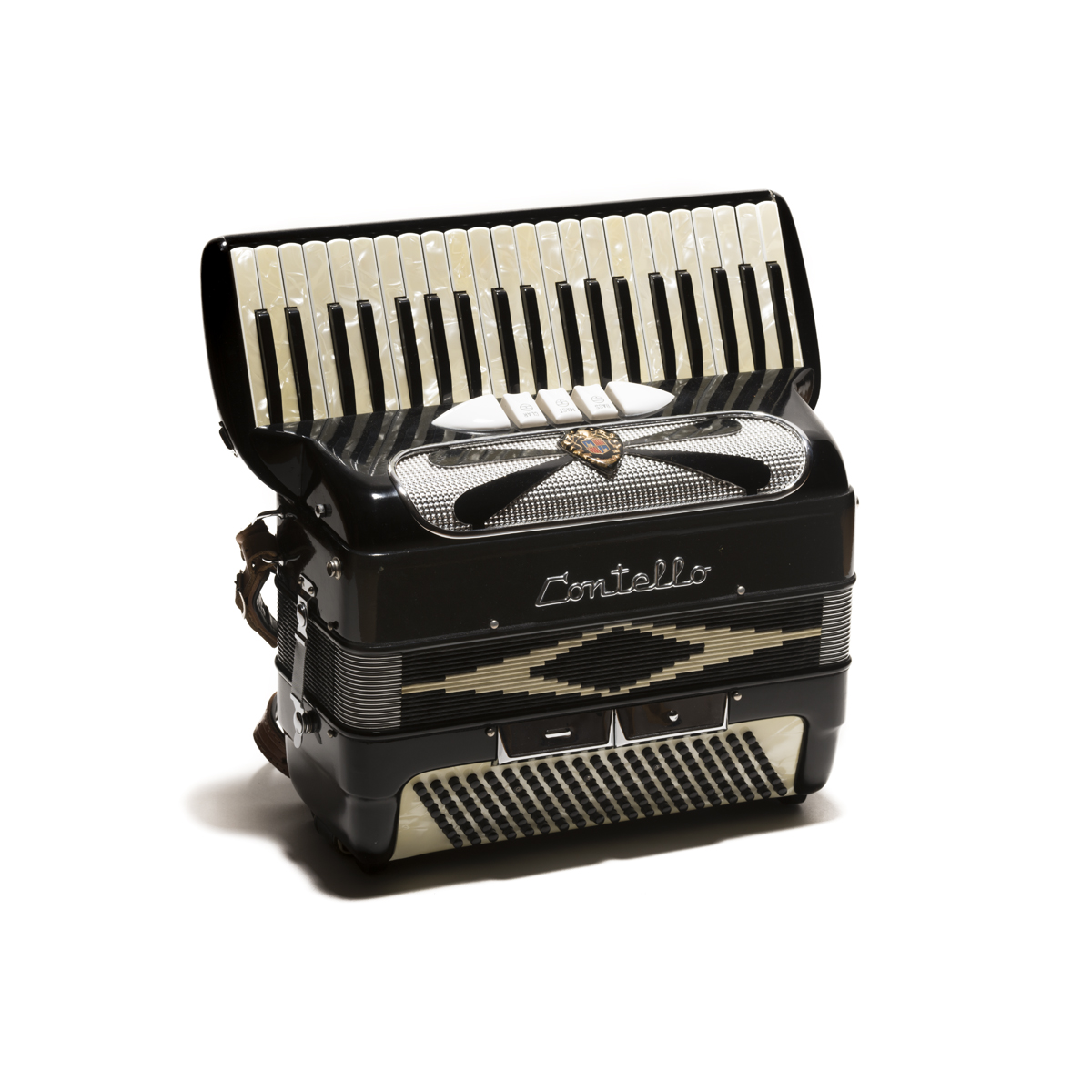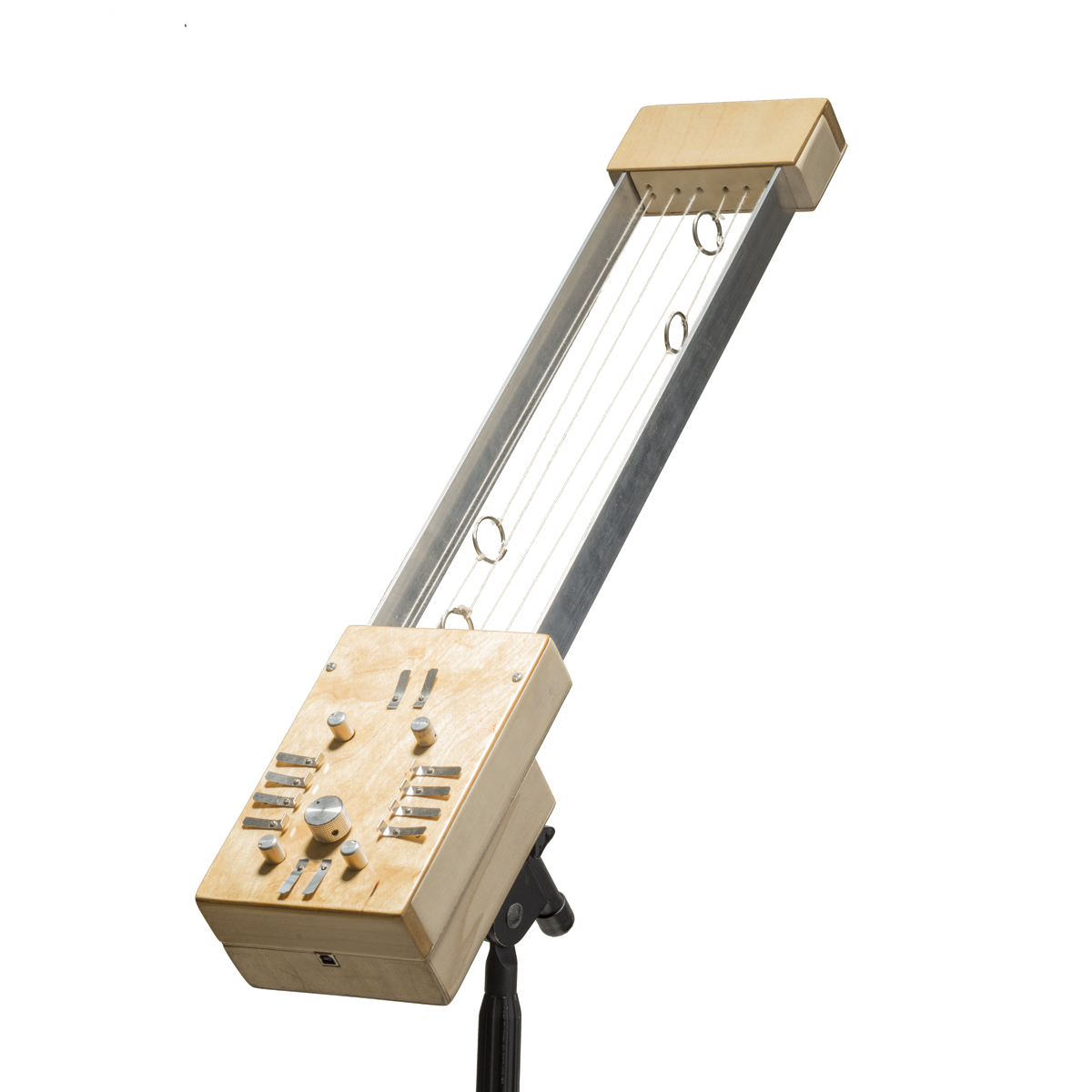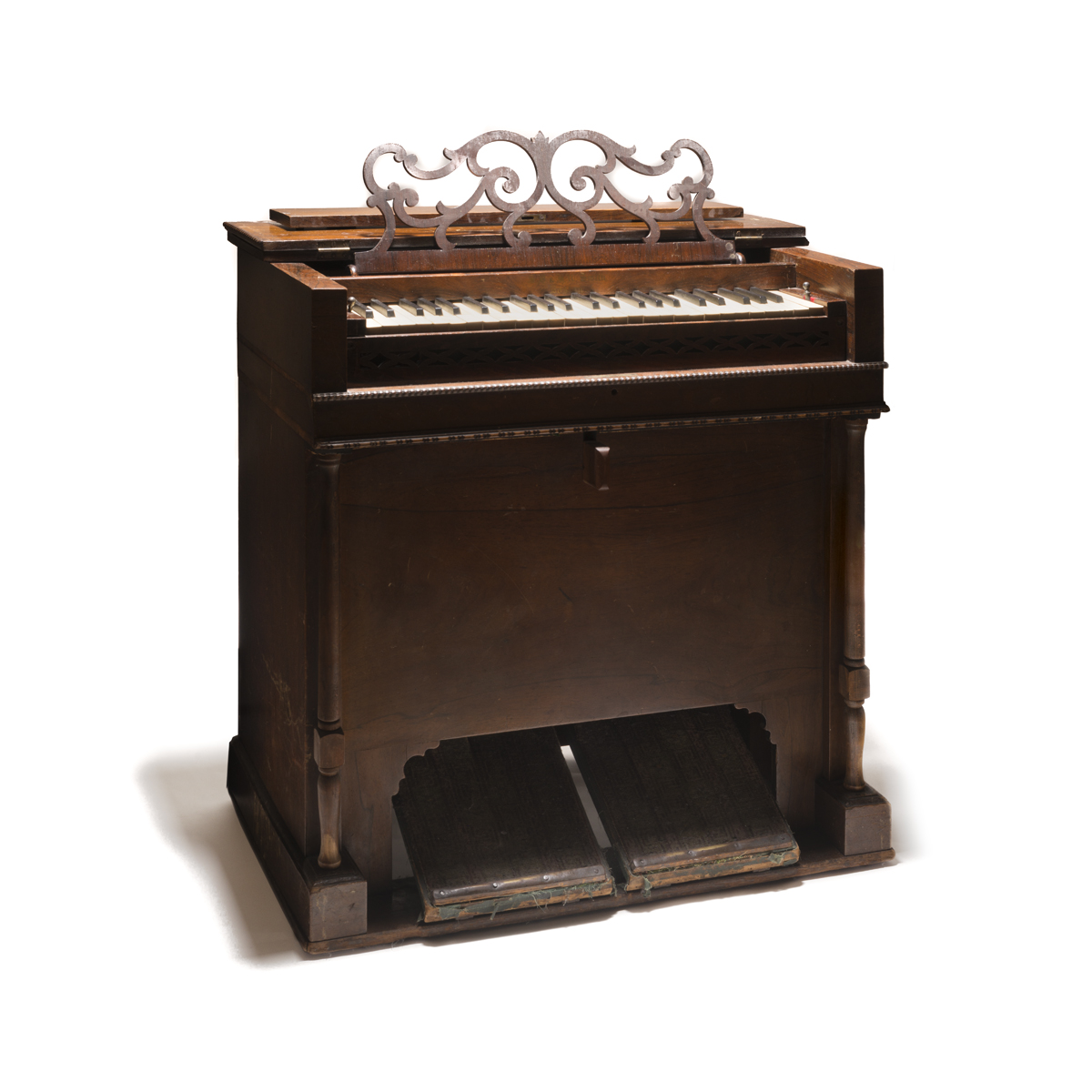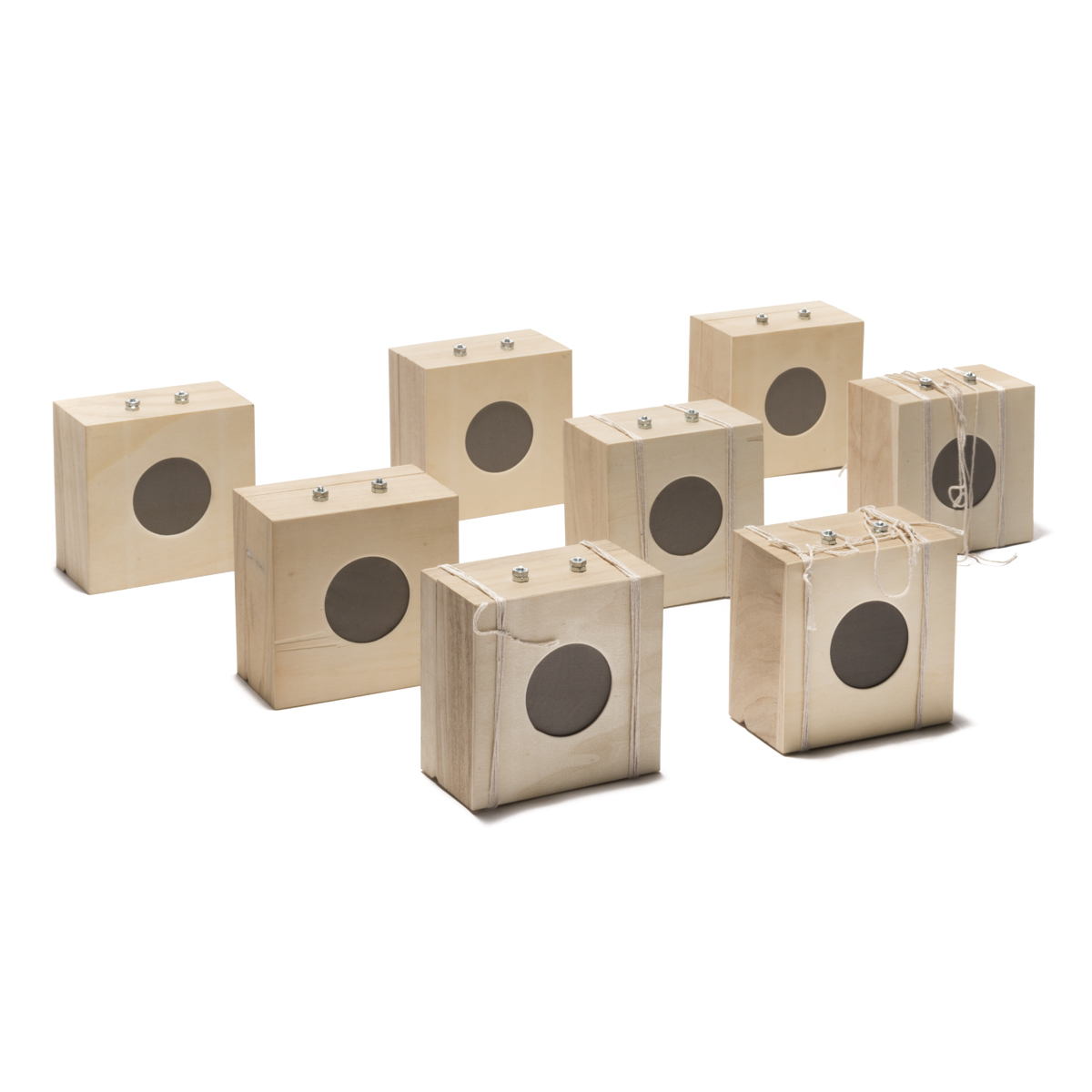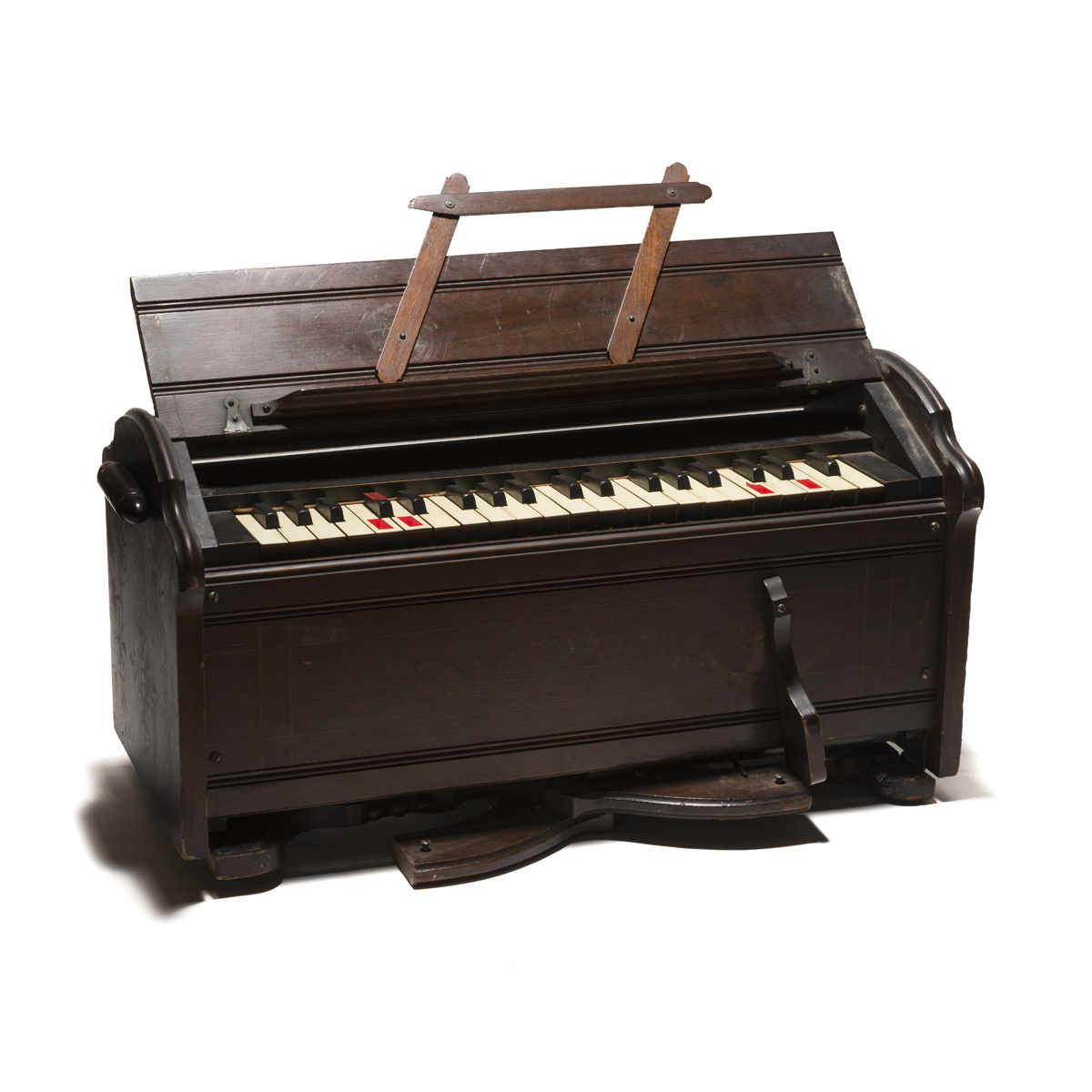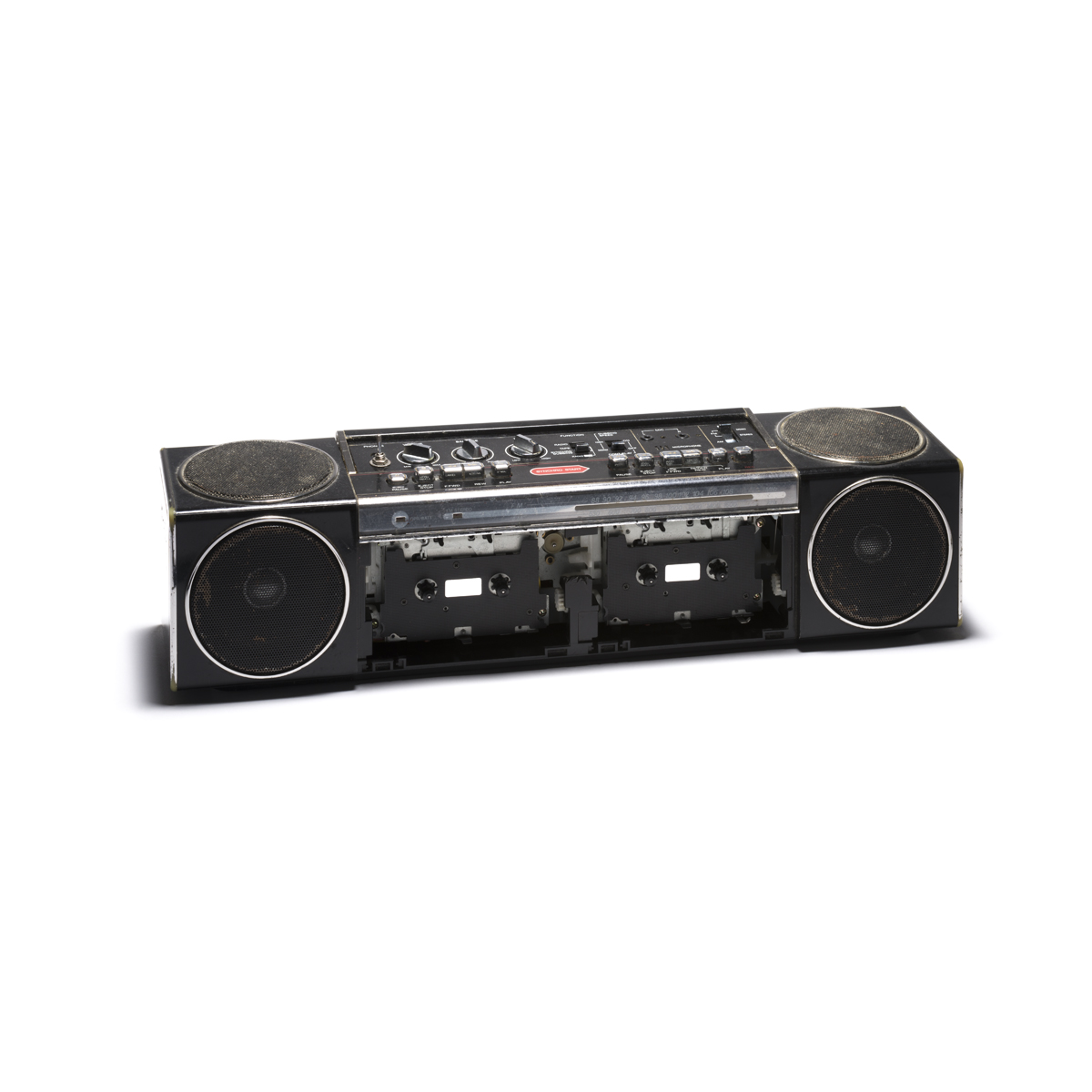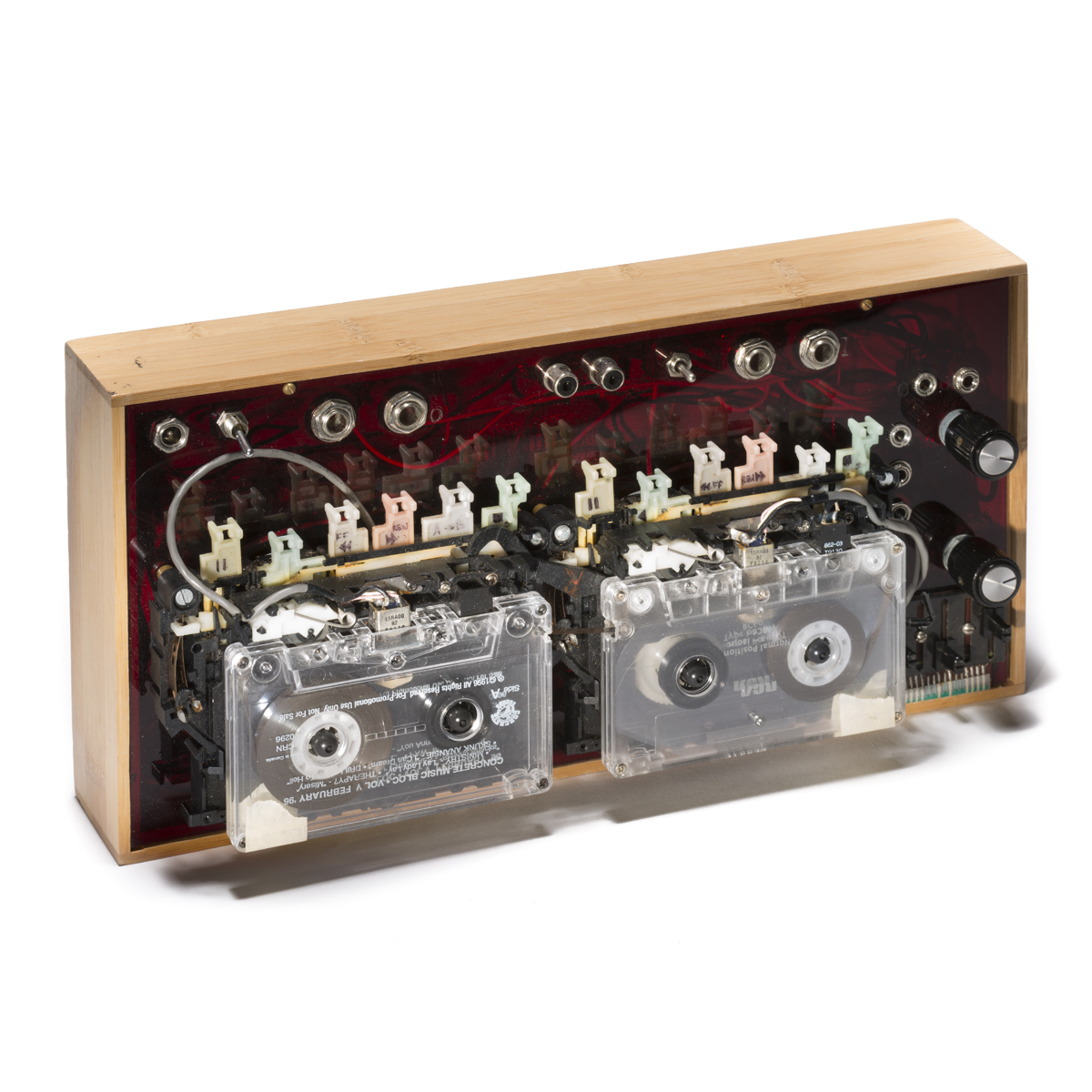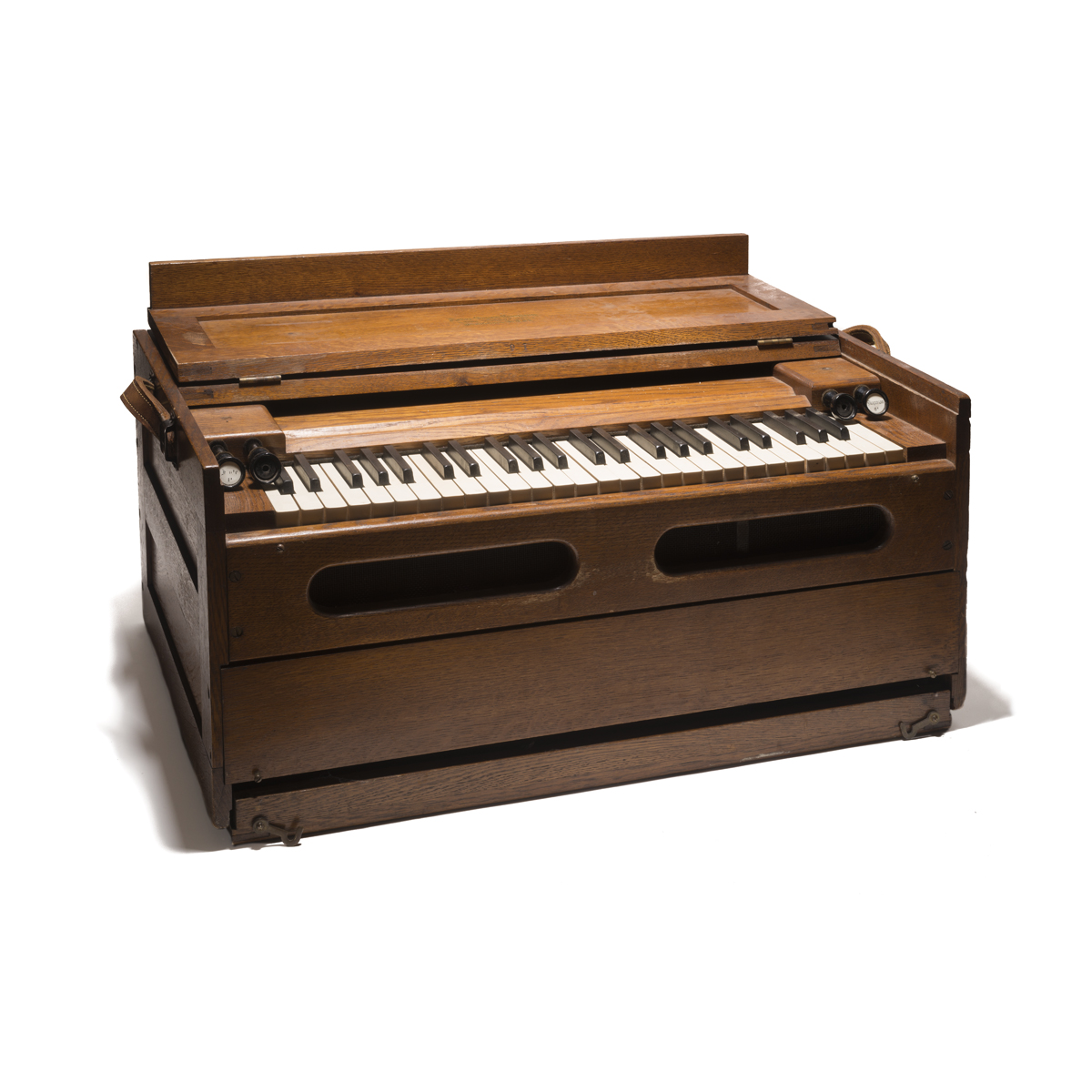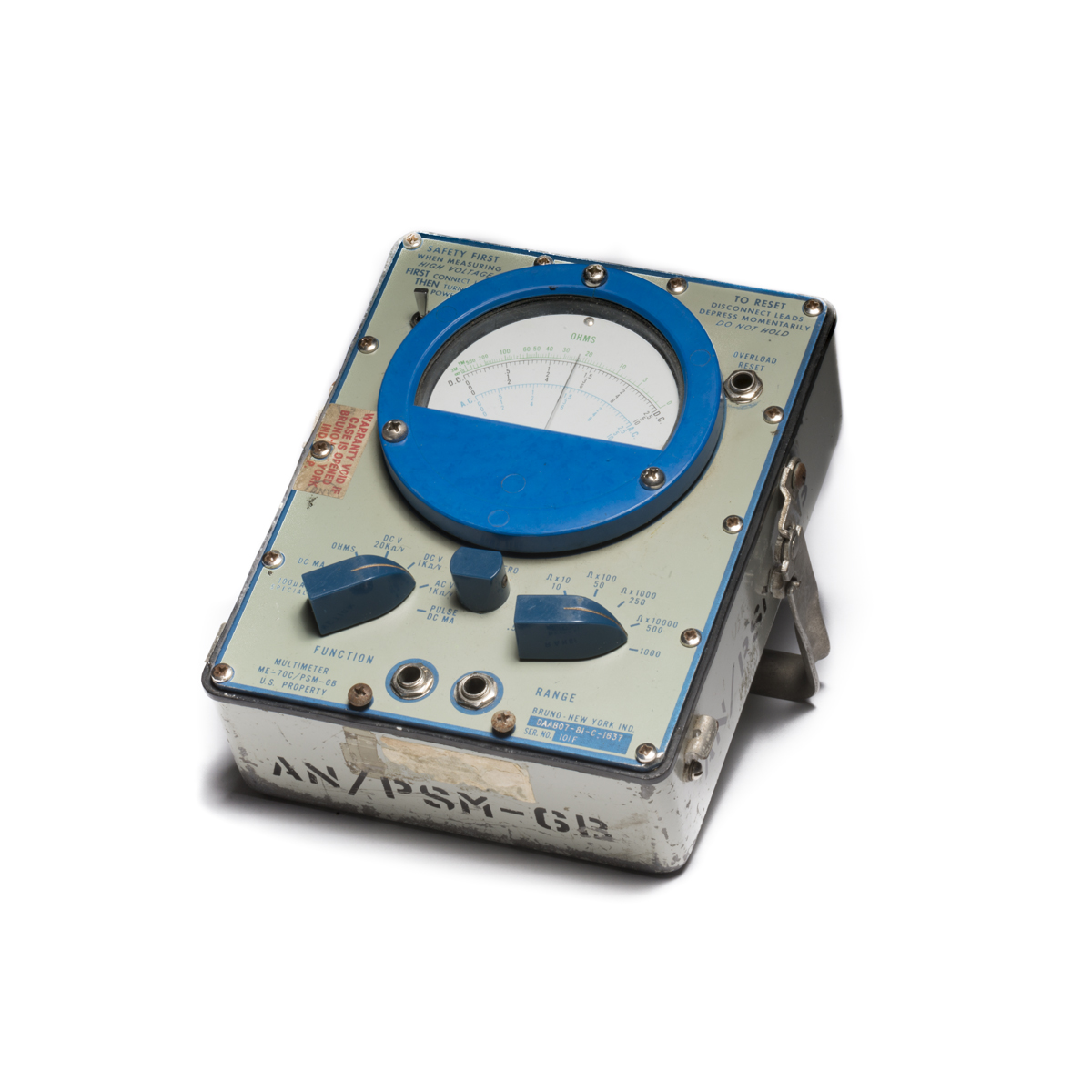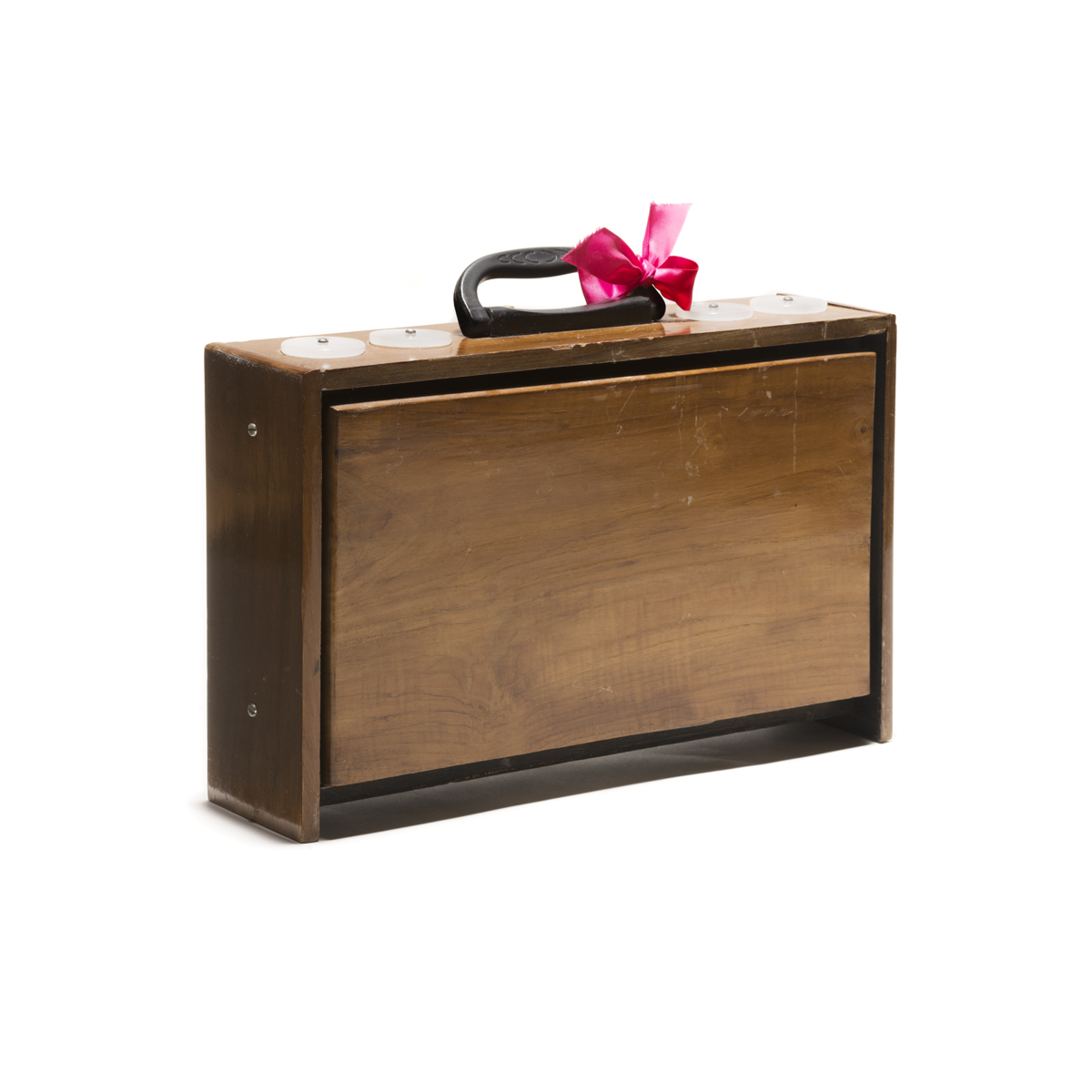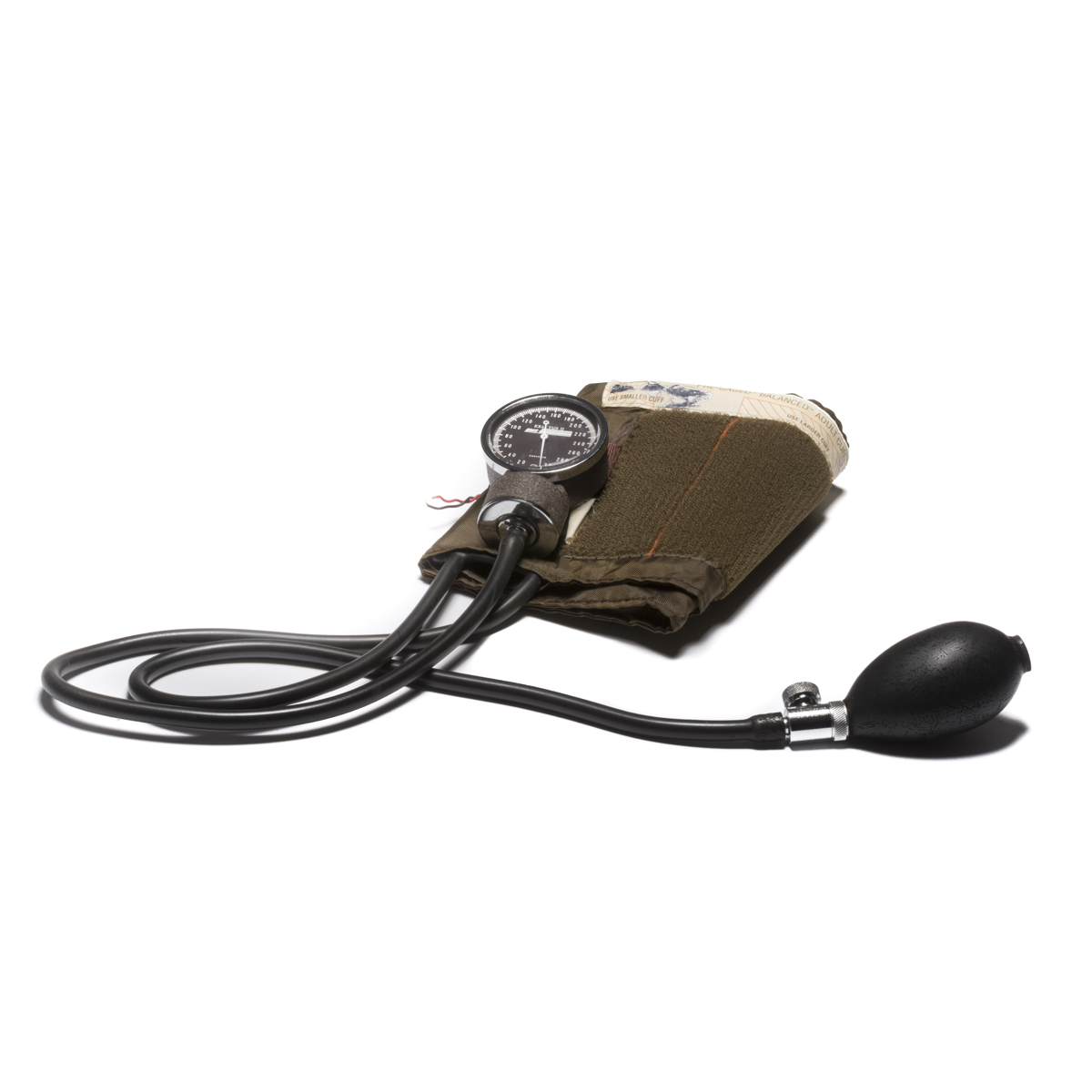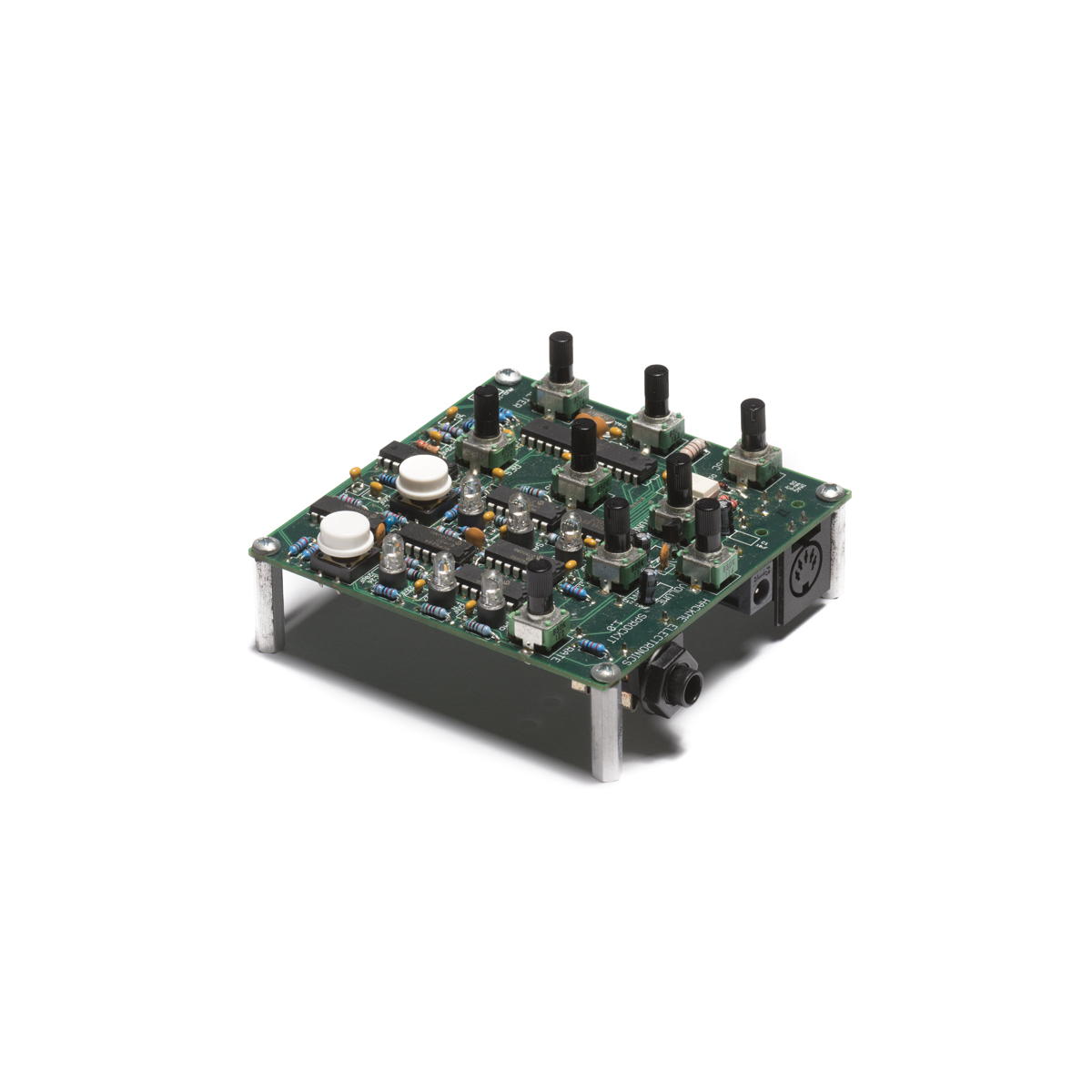-

Modified Boombox I
Tap title to expand details.
Modified Boombox I
Light physical alterations were made to the device to allow tape to pass from the recording head on the right to the playback head on the left. Sounds are recorded in through the device’s internal stereo microphones (located just above the speakers in the top corners) onto a tape and then played back a short time later through the device’s built-in speakers. Acoustic feedback causes the sound of the speakers to be recorded back onto the tape to be colored by the system and heard again. Some light electronic additions have been made to allow for more flexible signal output for amplification and recording. There is also an added feedback path that can be engaged to send electronic signals from within the device directly to the record head. This device uses consumer cassettes that have been modified to allow the tape to pass out of one shell through a slit in the side and be taken up by the opposite reel in a second shell.
Present in:
- Agate
- Brim
- Bypass
- Caper
- Compound Form
- Epoxy
- Impulses for Elaborated Turbulence (Excised)
- Labile Form
- Mild Grey Lustre
- Pied
- Scour
- Snuck Keel
- So Lobes Drape As Such Gills Over A Hanger’s Pit
- Son Form
- Sop
- Subparallel Episode
- The Pleasance & The Purchase
- While Like Teem or Bloom Comes (Tipping)
- Origin: Modified by Joseph Kramer
- Year: cir. 2003
-
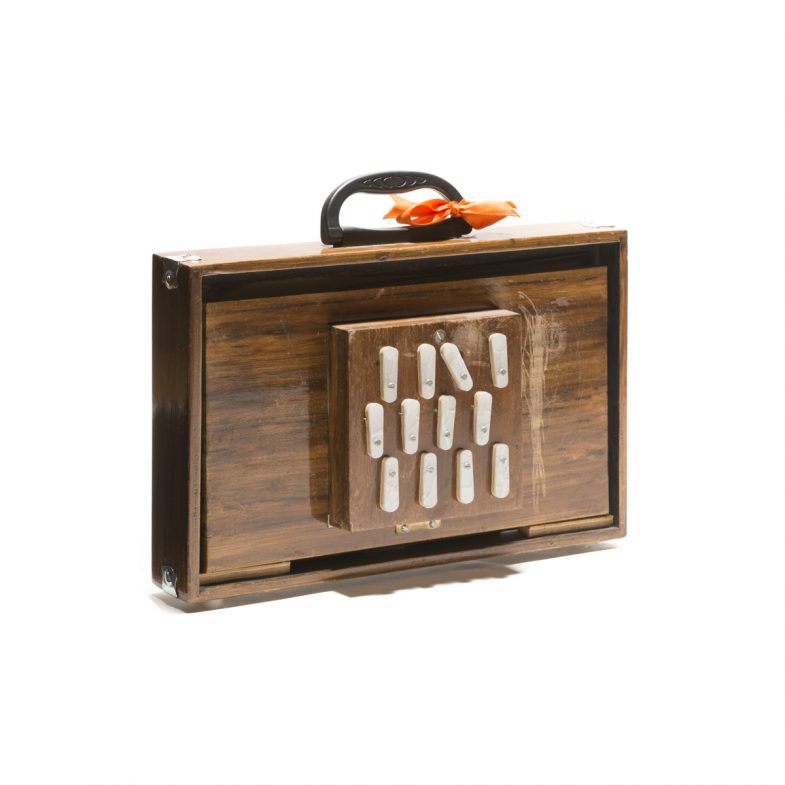
Shruti Box (Orange)
Tap title to expand details.
Shruti Box (Orange)
This shruti box was customized or “prepared” by removing reeds (“made lighter”), and captured by microphone techniques that foregrounded air leaks from the bellows, and filtered air coloration from reedless holes.
Present in:
- Agate
- Brim
- Caper
- Mild Grey Lustre
- Seam
- Scour
- Son Form
- The Pleasance & The Purchase
- Vinculum (Coincidence)
- Vinculum (Courses)
- Origin: Unknown; prepared by Noé Cuéllar
-
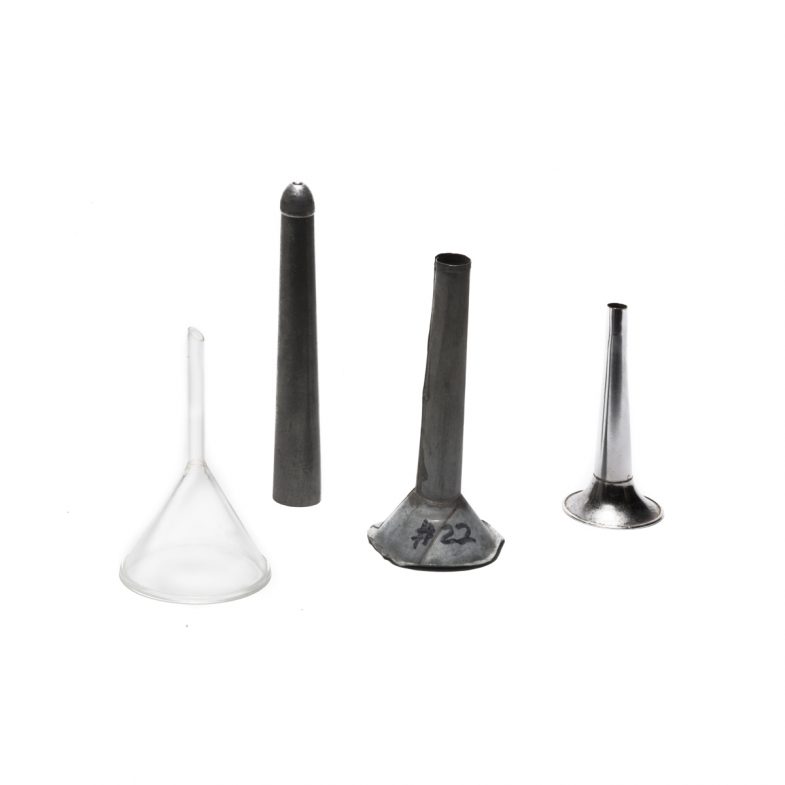
Acoustic Filters
Tap title to expand details.
-
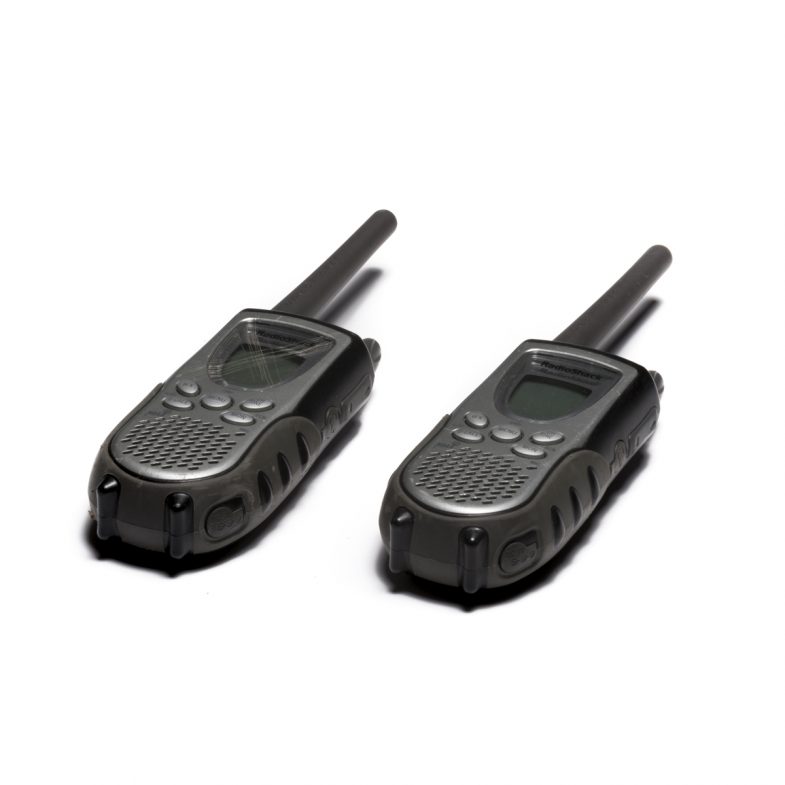
Transmitters
Tap title to expand details.
-
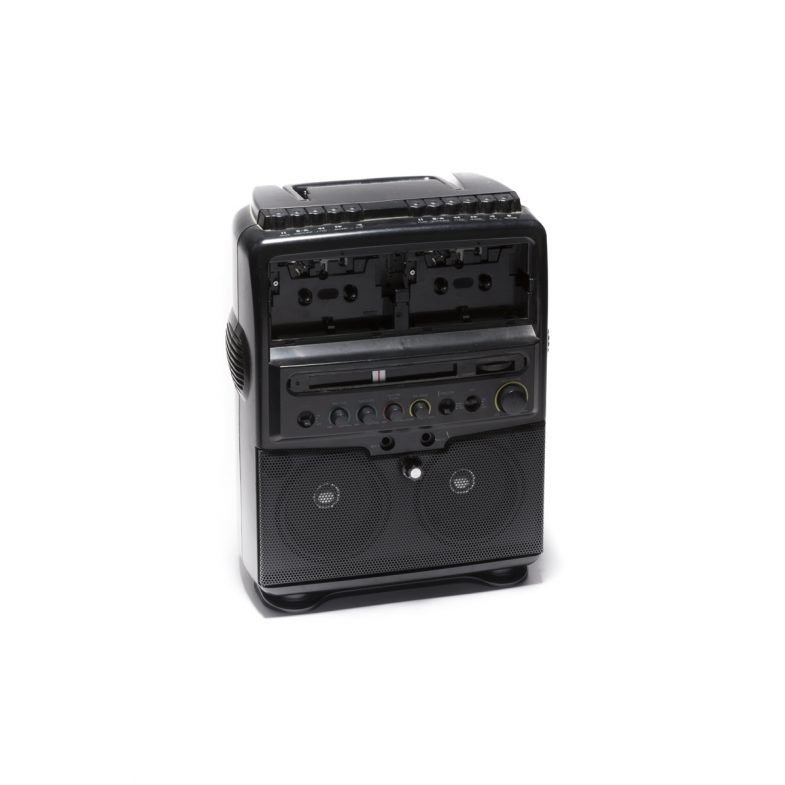
Karaoke Machines I & II
Tap title to expand details.
-

Modified Boombox II
Tap title to expand details.
-
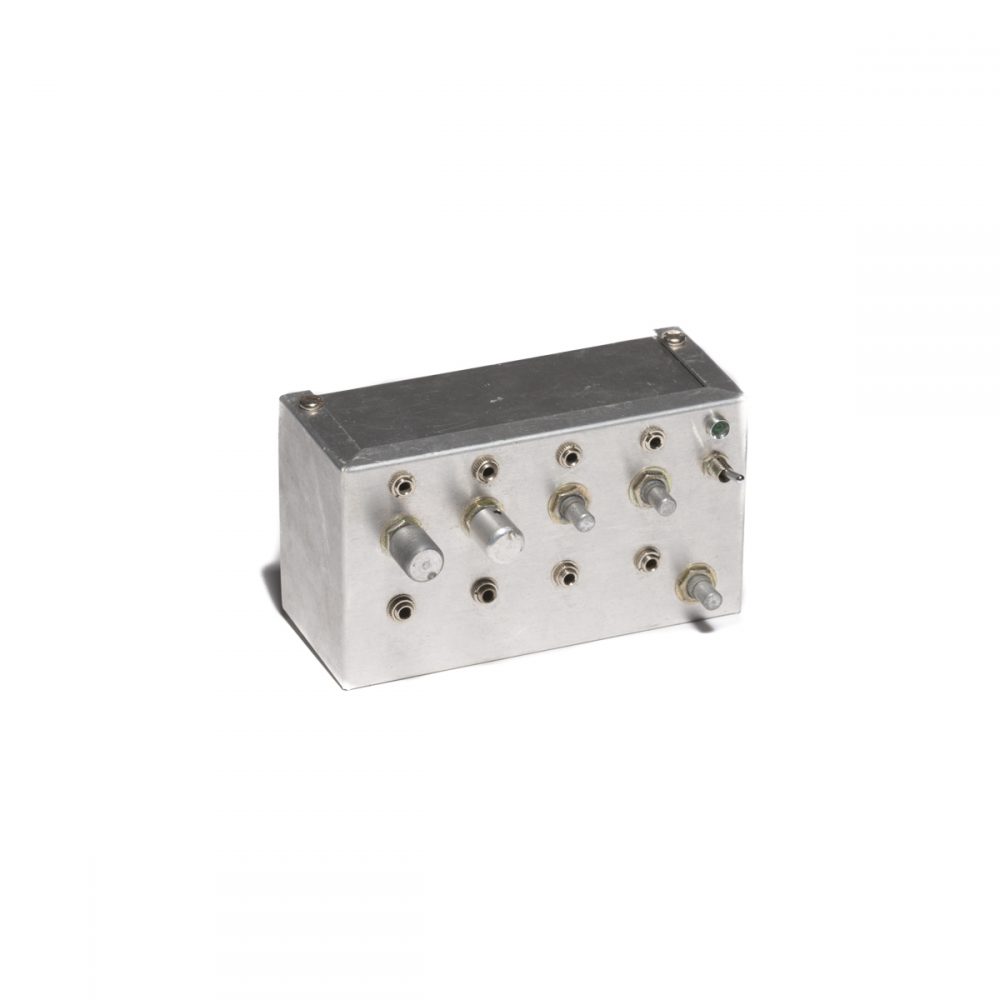
Microphone Preamp and Mixer
Tap title to expand details.
-
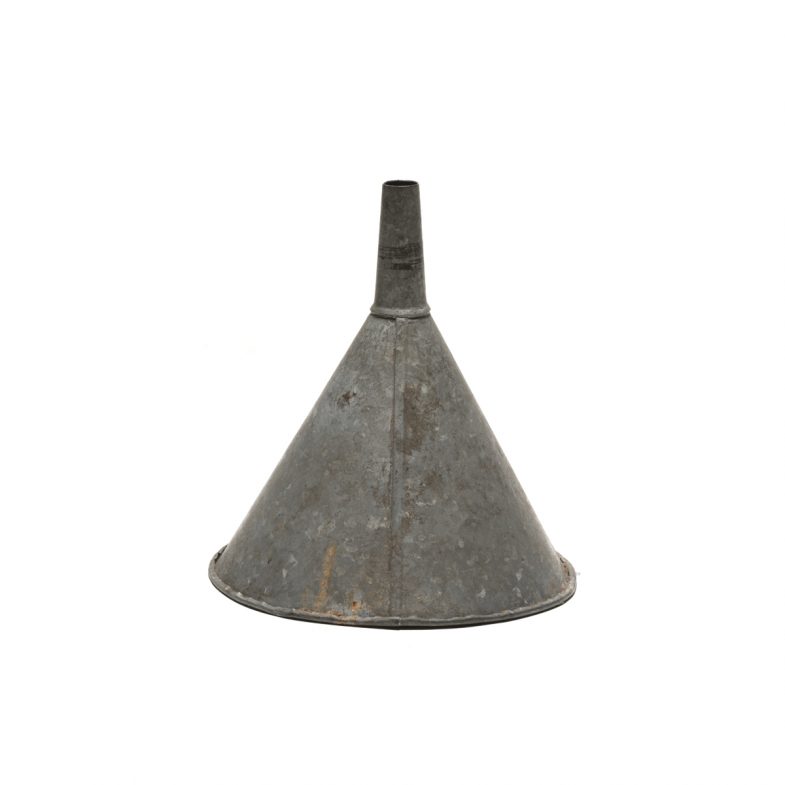
Handheld Funnels
Tap title to expand details.
-
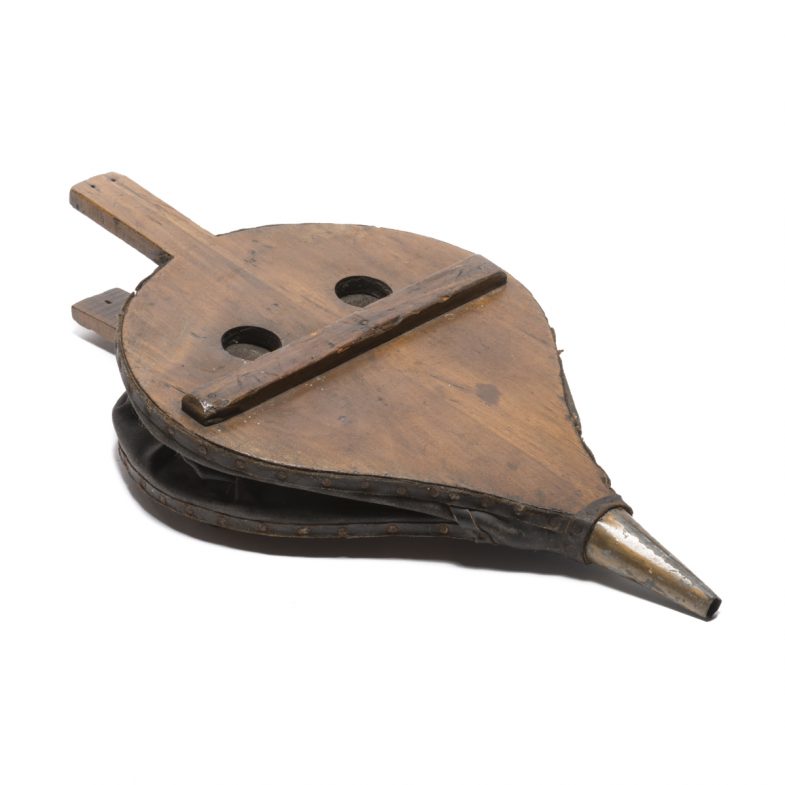
Fire Bellows
Tap title to expand details.
-
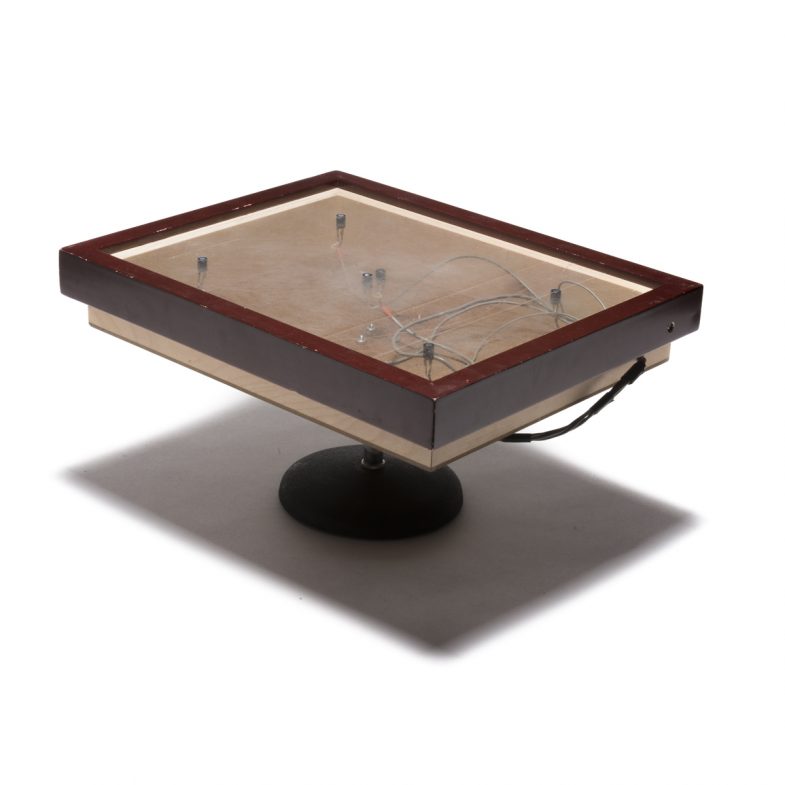
Inductive Mixing Table I
Tap title to expand details.
Inductive Mixing Table I
Designed to bring signals into the electronic domain from the electromagnetic domain. It pairs with a multichannel power amp to pick up signals from speakers and other magnetic sources and dispatch them to loudspeakers in the space. The spatial layout of the pickups on the table is meant to reference the location of the sound sources in the room.
Present in:
- A Vinculum Variation
- Blueberry
- Copse
- Surveillance
- Origin: Designed and constructed by Joseph Kramer
- Year: 2010
-

Free Reed Boxes
Tap title to expand details.
Free Reed Boxes
Multiple reed cells composed of wooden boxes with fixed free reeds, salvaged from pump organs. Designed to be activated remotely by tubes delivering air from bellows, breath, or other pneumatic source.
Present in:
- Vinculum (Coincidence)
- Vinculum (Courses)
- Origin: Designed and constructed by Joseph Kramer
- Materials: Wood, brass free reeds, foam, twine
- Year: 2011
-
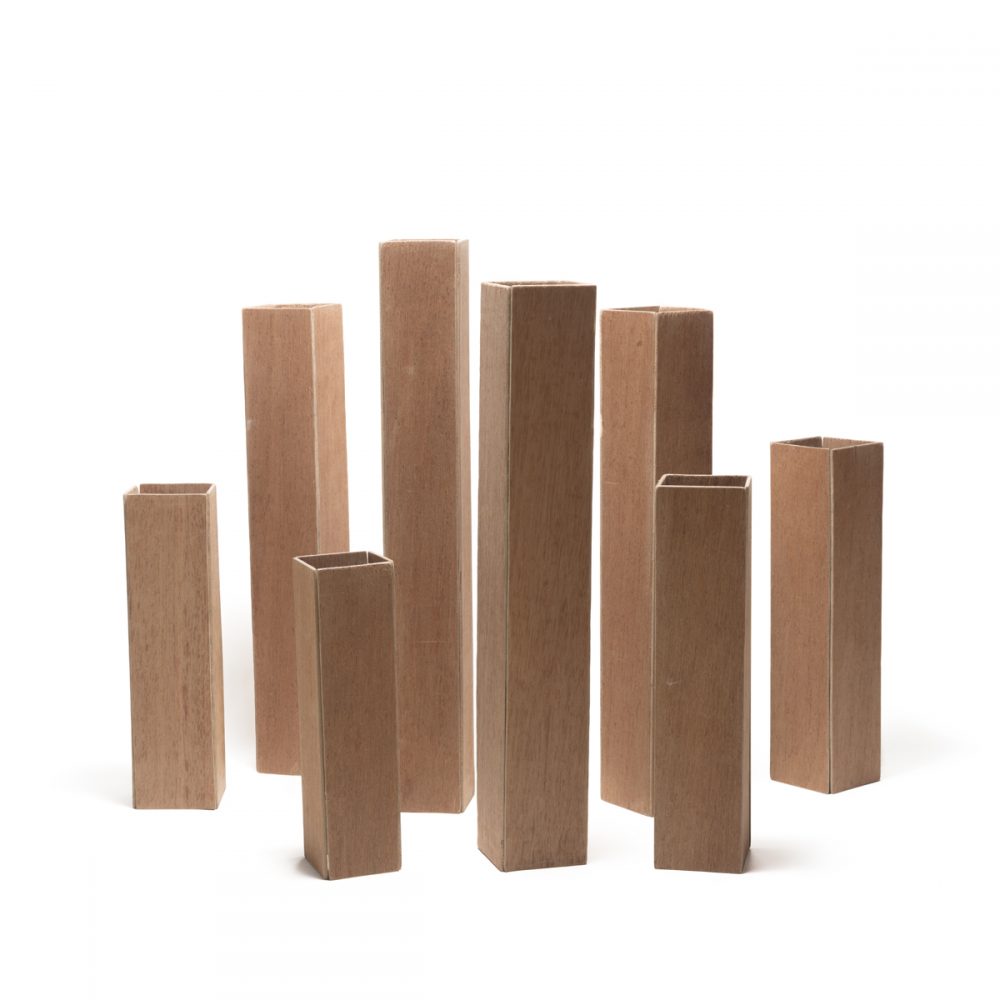
Wooden Filters/Resonators
Tap title to expand details.
-
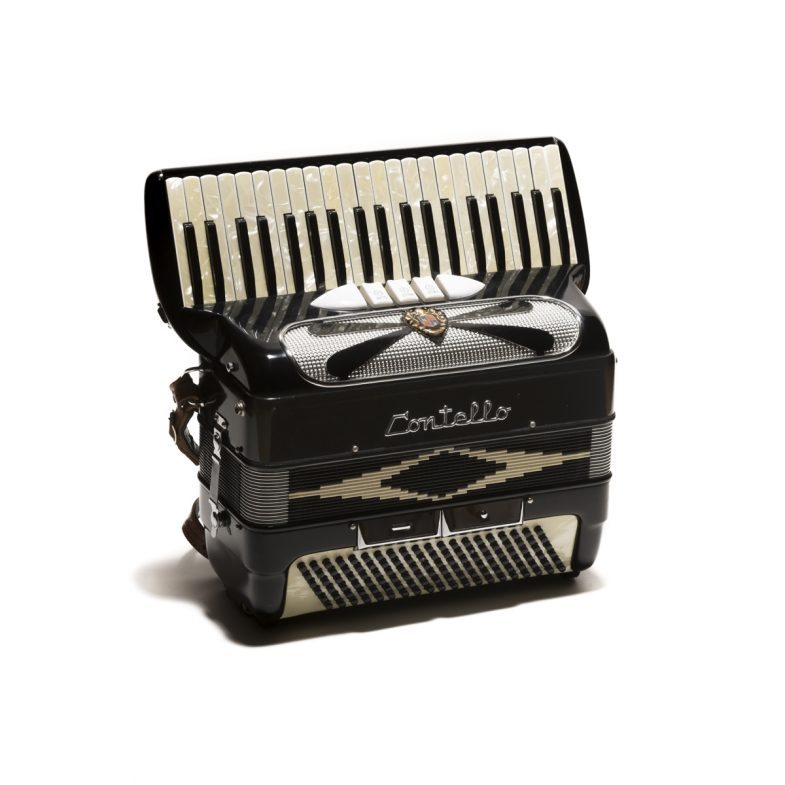
Accordions
Tap title to expand details.
-
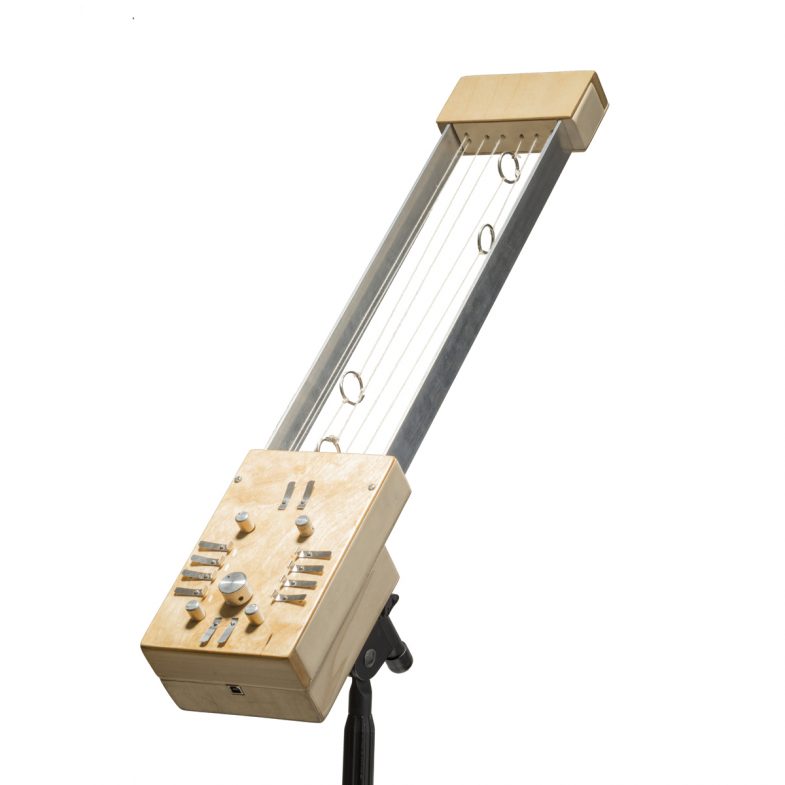
Sister
Tap title to expand details.
Sister
Originally a USB Playstation-style video game controller device with dual thumb sticks and multiple buttons that was fully reembodied and repurposed as a performance controller. Four rings on strings are slid along the length of the primary channel to provide continuous control of assignable parameters in software. Silver tabs act as assignable buttons and a rotary knob in the middle selects operating modes. Driver software written in Max/MSP provides assignable MIDI output.
Present in:
- Vinculum (Courses) [Version Baschet]
- Origin: Designed and constructed by Joseph Kramer
- Year: 2011
-
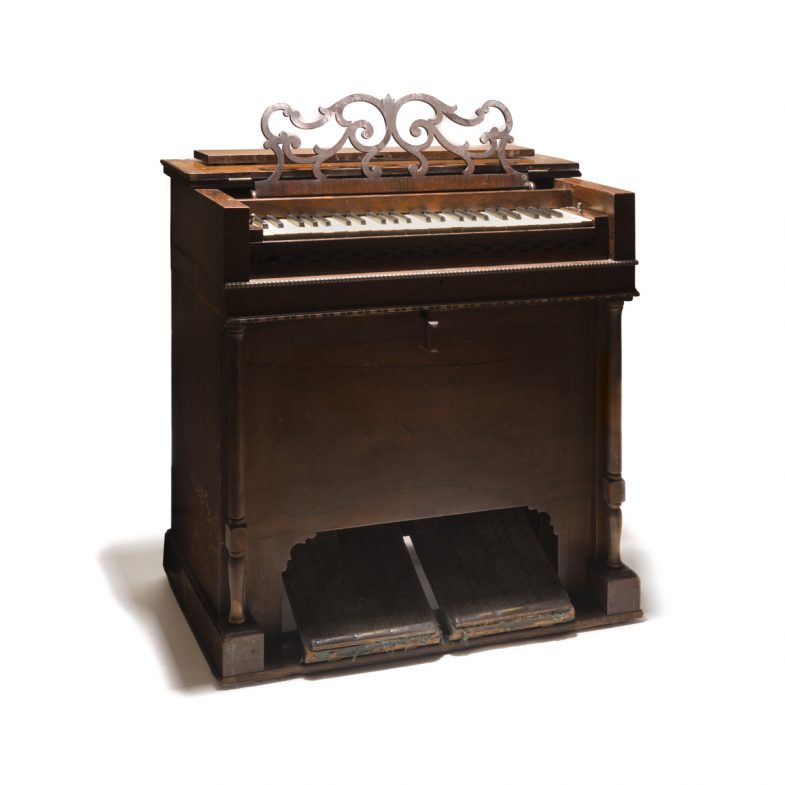
S.D. & H.W. Smith Pump Organ
Tap title to expand details.
-
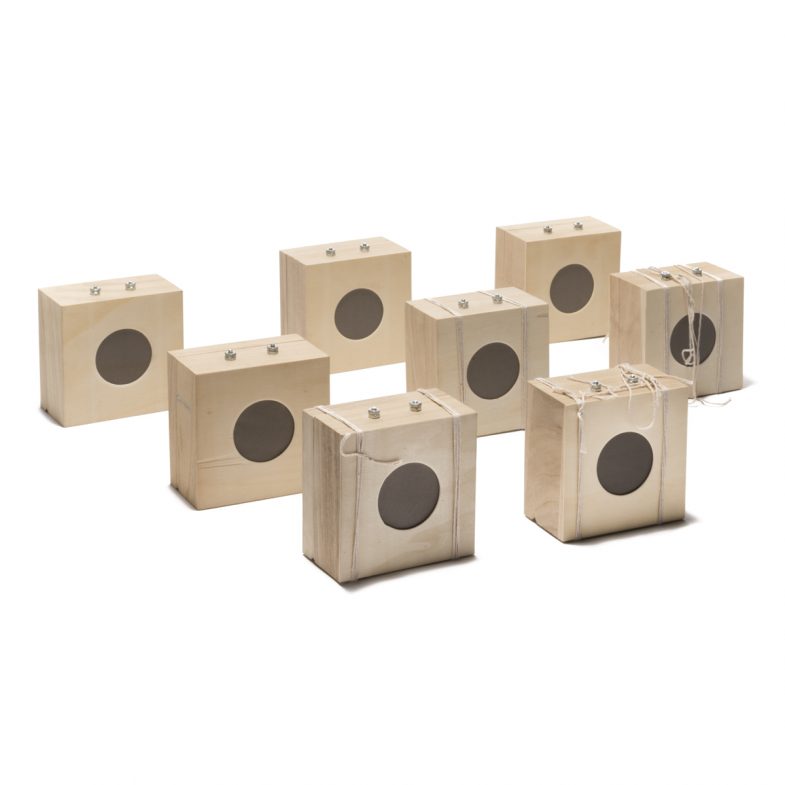
Speaker Boxes
Tap title to expand details.
-
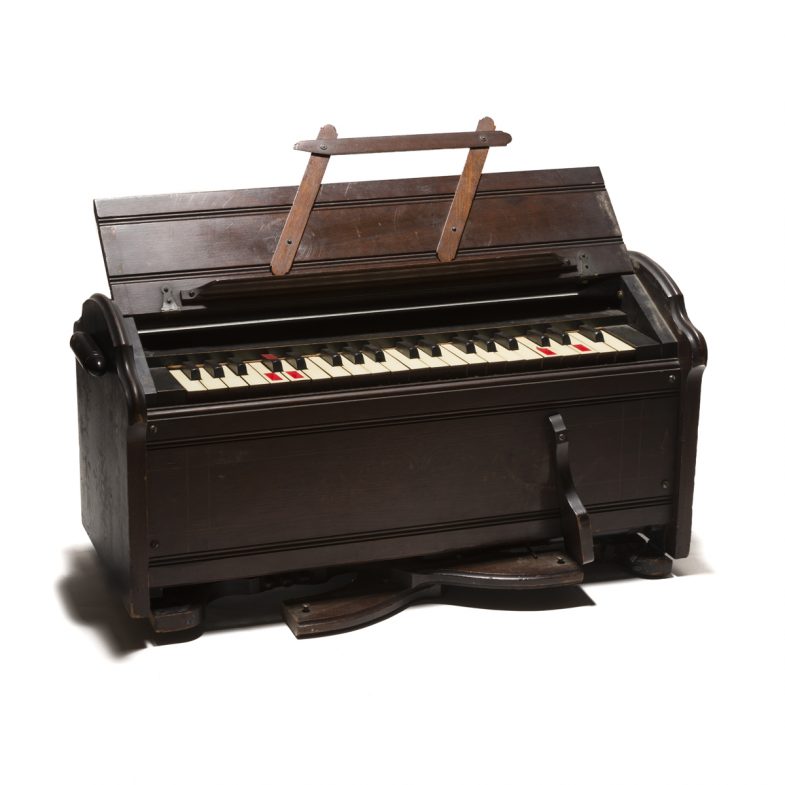
Mason & Hamlin “Baby” Kindergarten Reed Organ
Tap title to expand details.
Mason & Hamlin “Baby” Kindergarten Reed Organ
This walnut, 49-key “Kinder” underwent three separate preparation formulas which yielded a set of compositions. Each of the preparations focused primarily on customizing the lower and high registers, while maintaining a fairly regular mid-range. Reeds were replaced, modified, displaced, removed, or brought to contact with small foreign objects like adhesive tape, pieces of aluminum foil, twist ties, keys, and foam. These techniques highlight timbral effects from interfered reed vibrations, air-to-pitch ratios of individual notes, and air-noise coloration.
- First Preparation (“Compound”): Bramble, Discharge Form, Compound Form, While Like Teem or Bloom Comes (Tipping)
- Second Preparation (“Excisions”): Seam (Kinder), Snuck Keel, Impulses for Elaborated Turbulence (Excised), Sop, Hoist Spell, Held Cascade, Sweet Threat (Topple), Solvent
- Third Preparation (“Bypass”): Bypass
Specific performance gestures were developed to bring out the full timbral qualities of each aspect of the preparation. The gestures operated in close relationship to dynamic pumping techniques (measured expressions of airflow control by means of foot pedals) that simultaneously dictate rhythmic and tremolo effects. The preparation of the pump organ connotes Pierre Schaeffer’s “commutating instrument” concept for regulating musical sound and noise, Harry Partch’s adapted reed organs, and John Cage’s prepared piano techniques.
- Origin: Mason & Hamlin
- Year: 1883
-
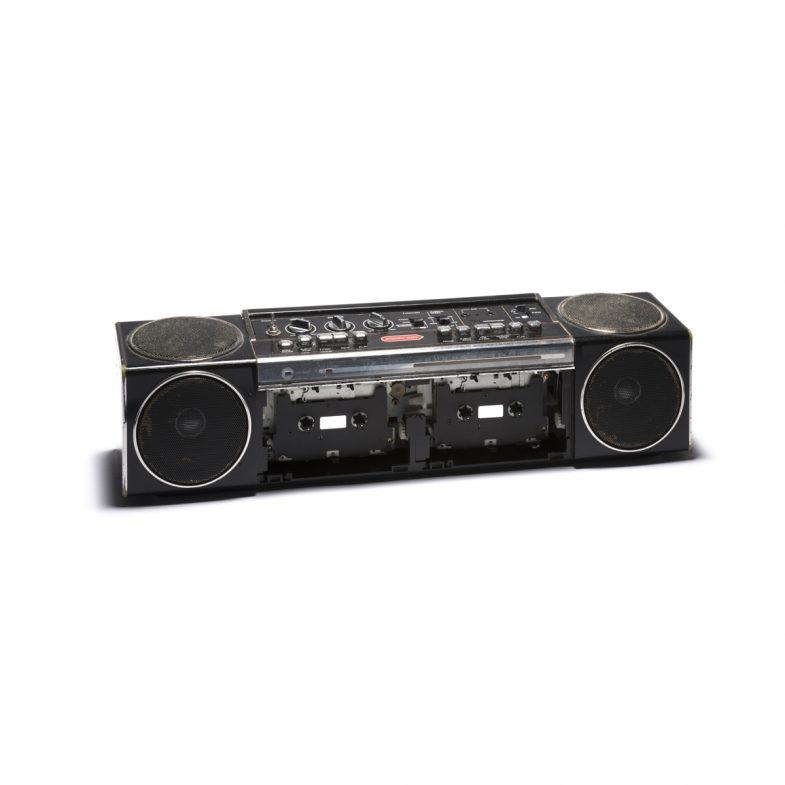
Modified Boombox III
Tap title to expand details.
-
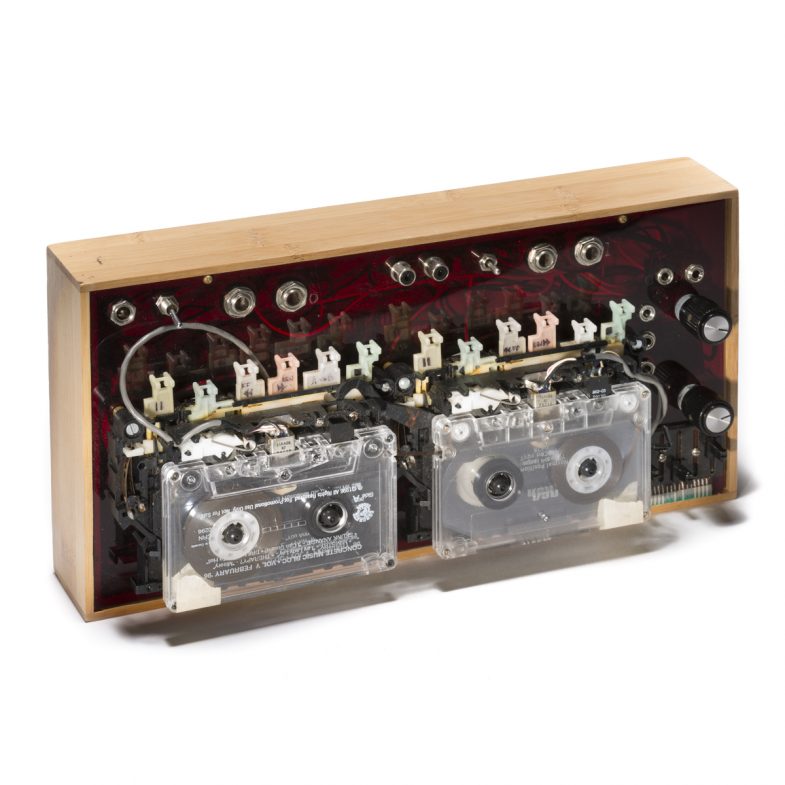
Modified Boombox IV
Tap title to expand details.
Modified Boombox IV
Functions in the same way as Modified Boomboxes I-III.
Traumatic circuit board amputations made it possible to rehouse the original tape machine and allow it to be set in record mode while simultaneously functioning in play mode. The addition of external jacks, knobs and switches allow for more flexible routing of signal into and out of the device. There is an internal microphone and external speakers can be connected directly.
Present in:
- Compound Form
- Origin: Modified and re-designed by Joseph Kramer
- Year: cir. 2012-2014
-
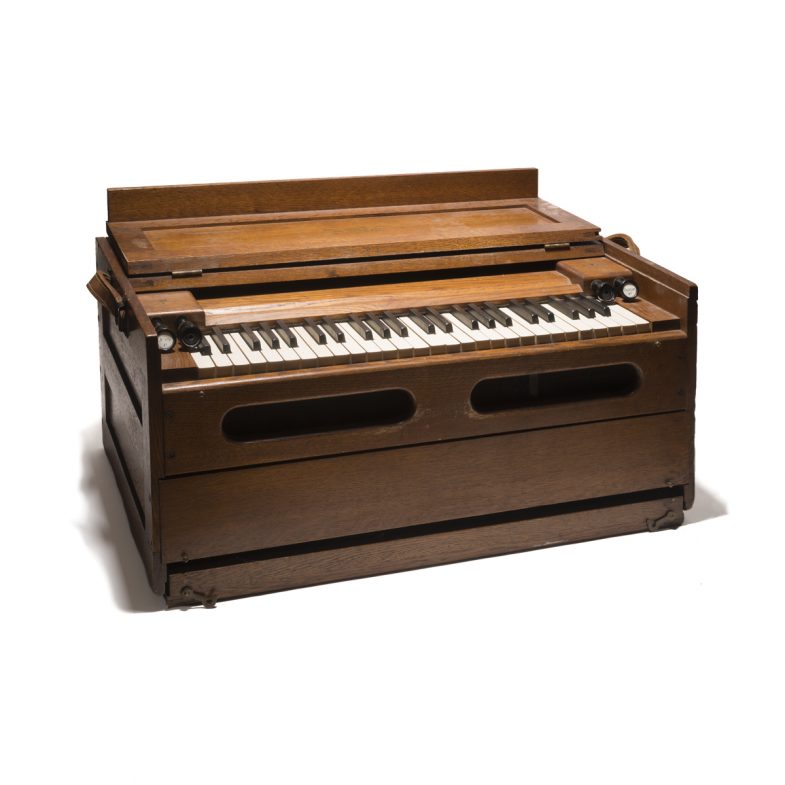
Estey Folding Pump Organ
Tap title to expand details.
Estey Folding Pump Organ
The Estey folding pump organ was prepared extensively across its double ranks, making it possible for timbrally complex dyads to sound with just one key depressed. Reeds were replaced, modified, displaced, removed, or brought to contact with small foreign objects like adhesive tape, pieces of aluminum foil, twist ties, keys, and foam. These techniques highlight timbral effects from interfered reed vibrations, air-to-pitch ratios of individual notes, and air-noise coloration.
Integral to the preparation of the Estey was the development and internal integration of the Estey Expander Module, made up of ten small condenser microphones placed at specific locations inside the organ, each with independent volume control. Altering the levels of each microphone altered the perspectives of the sounds coming from the different locations inside the organ, becoming a compositional-perspective tool specific to the instrument. The signal from the ten microphones was processed by the modified boombox several times, to create multiple generations of tape with varied transformations of the original audio signal.
Present in:
- Hoist Spell
- Soft Crown
- Soft Crown Transparencies
- Origin: Estey Organ Company
- Year: cir. 1935, prepared 2013-2014
-
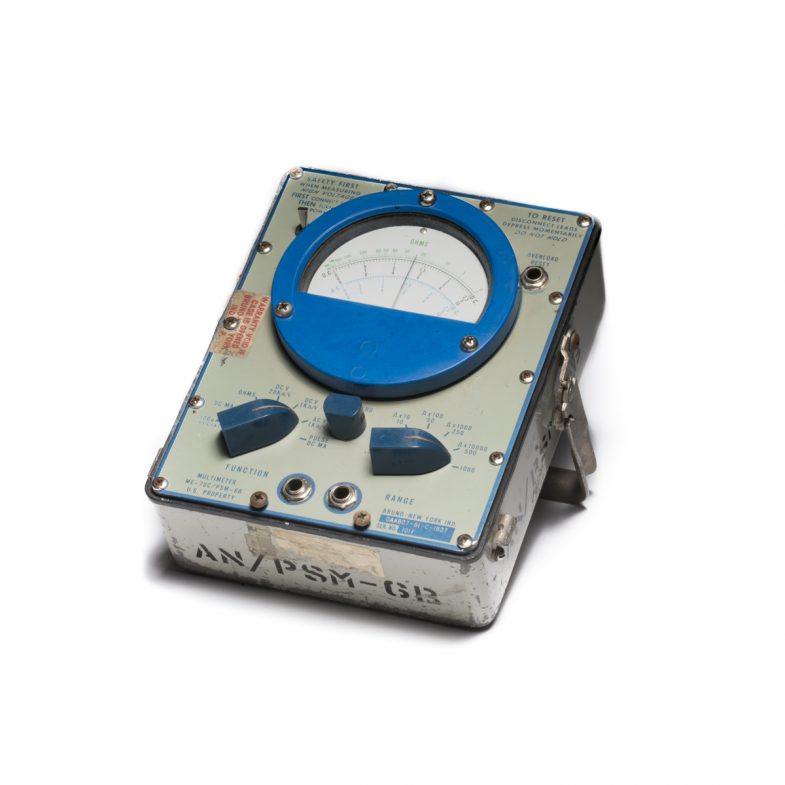
Microphonic Oscillator
Tap title to expand details.
-
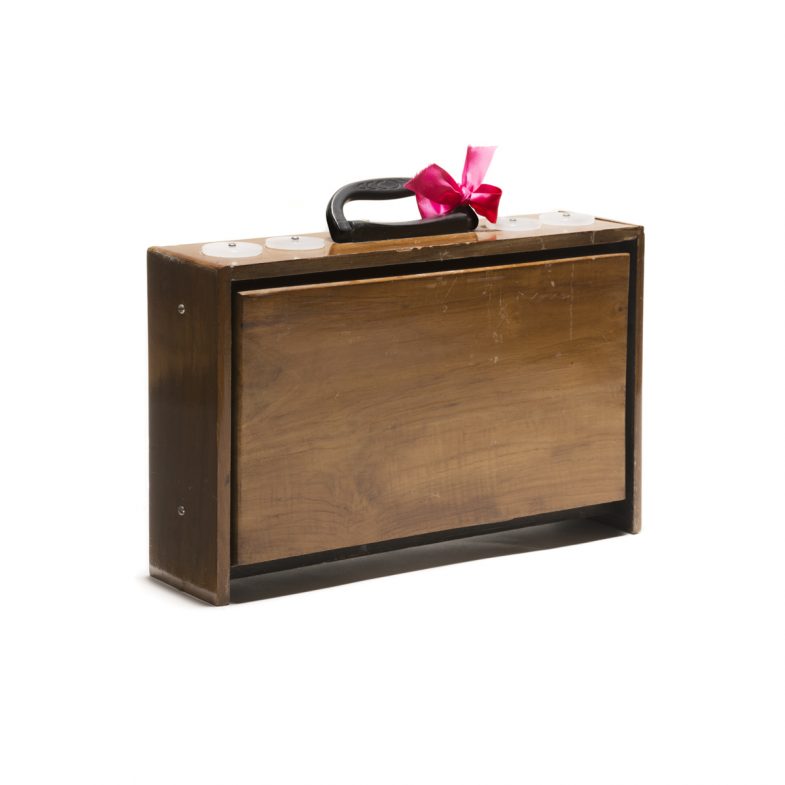
Shruti Box (Pink)
Tap title to expand details.
-
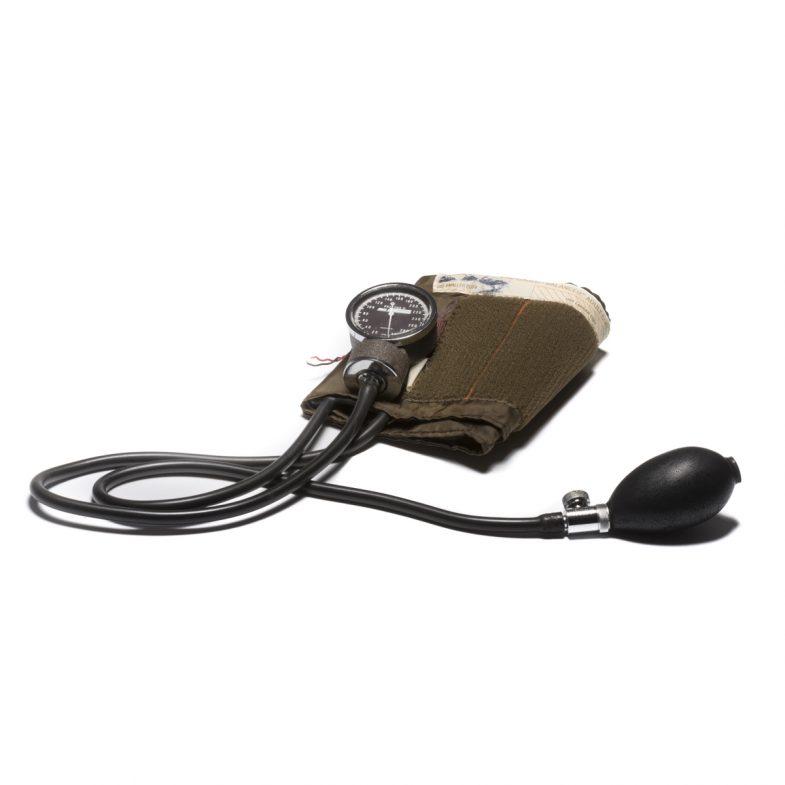
Sphygmomanometer
Tap title to expand details.
-
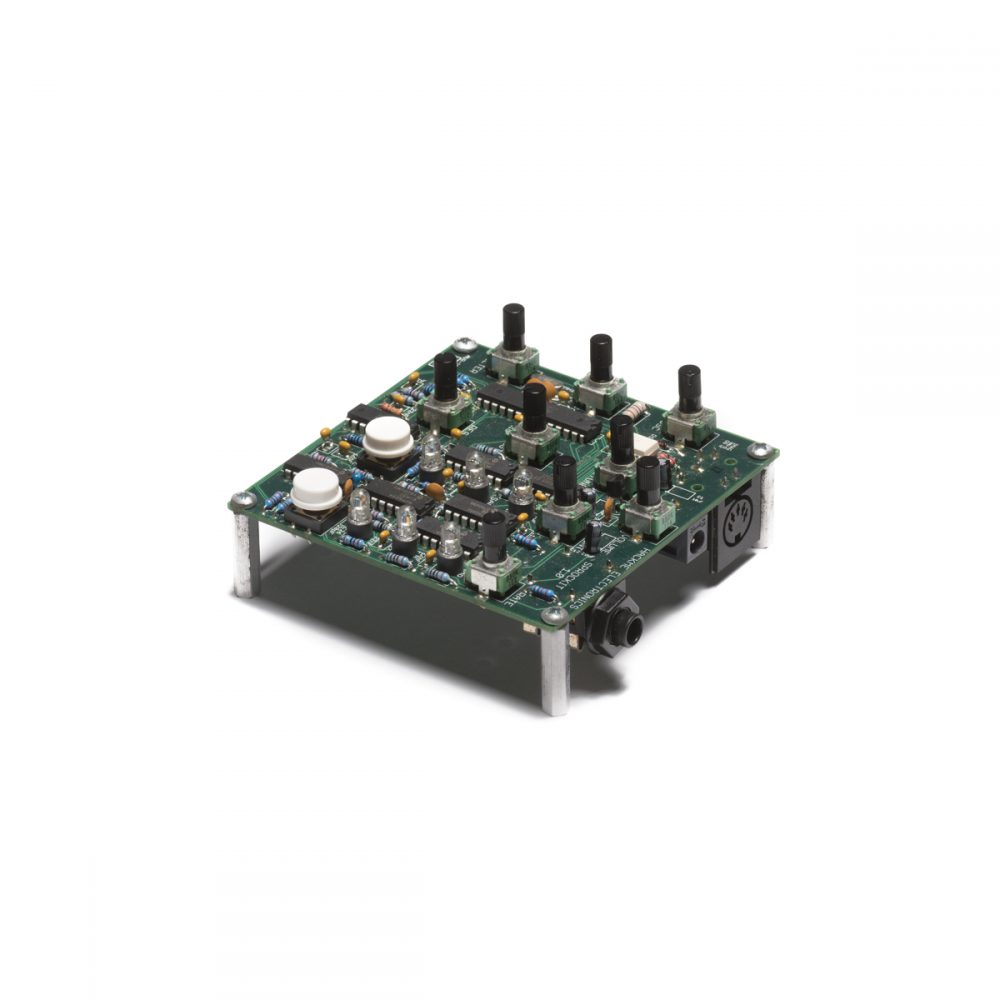
Sprocket Wavetable Synthesizer
Tap title to expand details.
